OUTDOOR LIVING
YOUR ULTIMATE SUMMER PLANNER
GLAMPING GLOWS UP PICKLEBALL IN PARADISE THE NEW WAY TO GRILL

Easy Weekend Getaways

Next Level
Landscape Design
Ranch House Revival
LIVE LIFE OUTSIDE


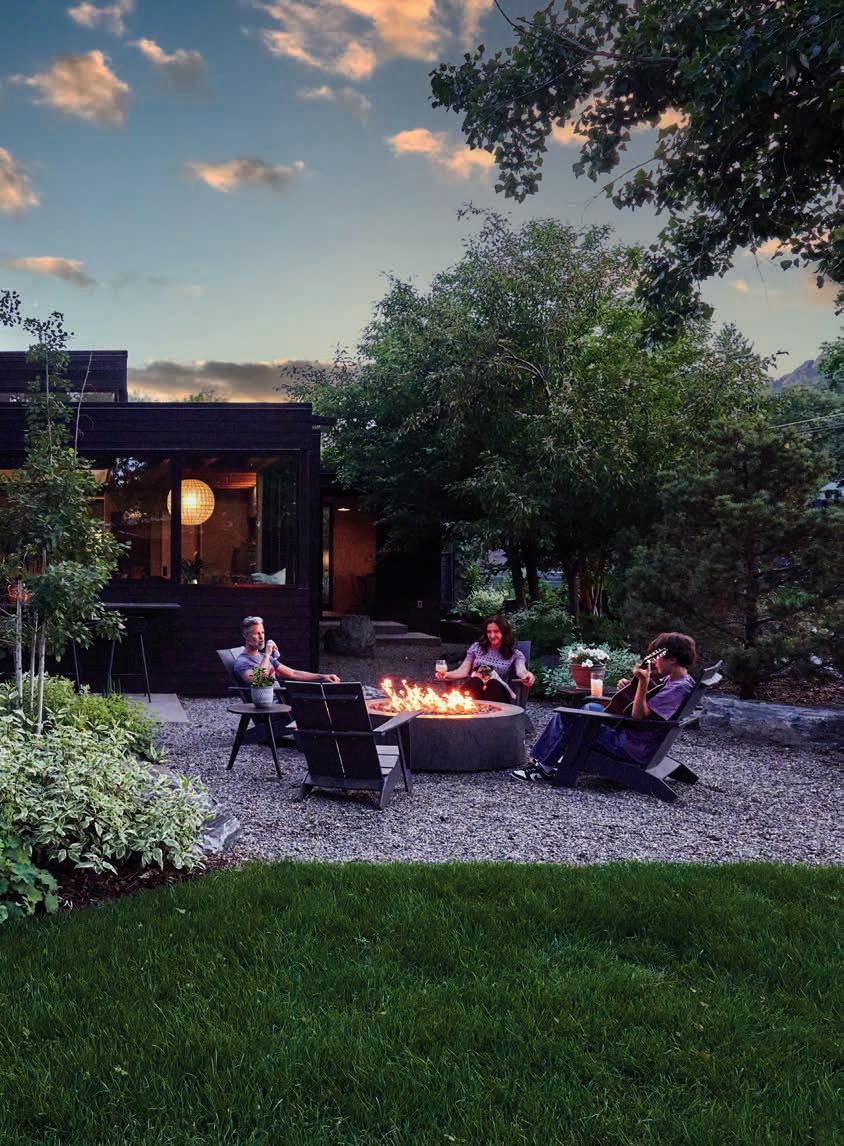


YOUR ULTIMATE SUMMER PLANNER
GLAMPING GLOWS UP PICKLEBALL IN PARADISE THE NEW WAY TO GRILL

Easy Weekend Getaways

Next Level
Landscape Design
Ranch House Revival




125 summers ago the original editors of this magazine assigned themselves a gloriously ambitious task. It was 1898 and the first issue of Sunset was published by the Southern Pacific Railroad Company. A mere 20 pages, it celebrated the riches of the Klondike, must-see vistas in Yosemite, and new resorts from Catalina to Pasadena, with the stated aim of “the presentation in convenient form the resources of the West.” Back in 1898 the editors understood the enormity of the mission, admitting that “so wide a field cannot be covered in one issue, therefore Sunset ’s work from number to number will be cumulative rather than comprehensive.” Over the years, Sunset has reported on the dawn of the automobile and aviation, published fiction by Jack London,

Celebrating transformative outdoor getaways across the West has long been a part of our mission.
championed adobe construction and modernist home design, covered the culinary diversity of its cities and the revival of indigenous foodways, and taught people how to make the most of solar power, drought tolerant landscaping, the A-frame, the tiny home, the ranch house, natural wine, electric vehicles, smart home technology, and infinitely more. “So wide a field” indeed.
That original mission continues in this issue celebrating summer in the West. With stories on the latest in vegan dining, high-style urban planning, and hotels that blur the line between hospitality and outdoor adventure, it’s not far off from what the editors celebrated in that first issue. “Summer,” they wrote with what was to become trademark infectious enthusiasm, “is essentially the period of vacations and relaxation, and whether one desires an ‘outing’ for health, for the enjoyment of the beauty and grandeur of scenery, or for sporting, he can more than satisfy himself in California. Grand old Lake Tahoe with its piney coves, the wonderful Shasta country, and the gorgeous Siskiyous, the secluded ravines and trout streams of the Coast Range, or the wilder gorges of the High Sierra; and the salt sea spray from countless beaches, all invite you.” Sunset of course went on to cover the West from Alaska to Baja, but the sentiment remains the same.
So in this issue we’ve put together a summer outdoor travel guide to better empower you to explore the outdoors, with the latest luxe offerings in glamping, trekking, and apparel, along with stories celebrating organizations increasing accessibility for previously underserved populations. You’ll find a Colorado house that evolves that iconic Sunset structure, the ranch house. Our profile of renowned landscape architecture firm Terremoto continues our tradition of celebrating gardens incorporating native plants to help preserve the resources and biodiversity of the West (back in 1959 we sang the praises of planting a wild-spirited native plant garden, advising our readers to tend them with “skilled neglect”). And as part of a new ongoing cross-platform series mining our rich trove of vintage issues, you’ll find Recipe Remix, wherein we trace the history of guacamole, that quintessentially Western dish. In the coming months look out for more vintage content in our pages and across our platforms, from newsletters to video to social media, and join us in celebrating this milestone. Here’s to another 125 perfect Western summers.
—Hugh Garvey, EDITOR-IN-CHIEF• P.O. BOX 15688, BEVERLY HILLS, CA 90209 • SUNSET.COM Copyright ©2023 S. Media International Corporation. All rights reserved. Reproduction in whole or in part without written permission is prohibited. No responsibility is assumed for unsolicited submissions. Manuscripts, photographs, and other material submitted to P.O. Box 15688 Beverly Hills, CA 90209 can be acknowledged or returned only if accompanied by a self-addressed, stamped envelope. For assistance with your Sunset subscription, call 1-800-777-0117. sunset@omeda.com
CHAIRMAN & PUBLISHER
Michael A. Reinstein
EDITOR-IN-CHIEF
Hugh Garvey
DIGITAL DIRECTOR
Sarah Yang
CREATIVE DIRECTOR
Michael Wilson
PHOTO EDITOR
Christine Bobbish
STAFF PHOTOGRAPHER
Thomas J. Story
TRAVEL EDITOR
Krista Simmons
SOCIAL MEDIA EDITOR
Kristin Guy
CONTRIBUTING HOME & DESIGN EDITOR
Christine Lennon
CONTRIBUTING HOME & GARDEN EDITOR
Deanna Kizis
VICE PRESIDENT, DIGITAL INITIATIVES
Matt Gross DIGITAL PRODUCER/NEWSLETTER EDITOR
Nicole Clausing
LIFESTYLE CONTRIBUTOR
Camille Styles
SENIOR DIRECTOR, PRODUCTION
Jamie Elliott
Sales & Marketing
SVP, MEDIA SOLUTIONS
Mort Greenberg
VP, PARTNERSHIPS
Kathleen Craven
HEAD OF TRAVEL
Pamela Coffey
HEAD OF OUTDOOR
Kristi Rummel
SVP, REVENUE OPERATIONS
Kelly Facer
DIRECTOR OF AD OPERATIONS
Mindy Morgan
HEAD OF CUSTOM EVENTS
Tracy Seng
Sunset Media International Corporation
BUSINESS DEVELOPMENT
Tom Griffiths
Graydon Sheinberg

The Script sink faucet boasts clear crystal knob handles from French cristallerie Saint-Louis, providing unparalleled elegance and exquisite craftsmanship to elevate your daily experience.



America’s fastest-growing sport was invented in the West, where it gets a designforward flourish, complete with stylish new gear and luxe hotels offering lessons.
Pickleball—the quirky hybrid of tennis, ping-pong, and badminton— might be all the rage in sunny climes like Palm Beach, but it has its roots in the Pacific Northwest, where it was created by a group of dads in 1965 on Bainbridge Island, Washington. Turn the page to learn more!
 Photograph by THOMAS J. STORY
Story by KRISTA SIMMONS
Paddles from Recess infuse the sport with style.
Photograph by THOMAS J. STORY
Story by KRISTA SIMMONS
Paddles from Recess infuse the sport with style.
The jaunty activity, which was named after Pickles, one of the creators’ dogs, went from relative obscurity to wild popularity during the pandemic, when finding new ways to enjoy the outdoors was at a premium. Now the Association of Pickleball Professionals estimates that there are currently 36.5 million pickleball players in the U.S., an impressive number given that for many years pickleball was considered strictly a game for old-timers.
That’s in good part because the sport isn’t just fun to say but fun to play. And even more so when it can be done stylishly, with colorfully designed gear from Recess Pickleball. Several of the company’s modern pickleball paddles are named for some of our favorite West Coast locations like Ojai, Zuma, Tahoe, Miramar, and Vista.
Co-founders and pickleball enthusiasts Maggie Brown and Grace Moore describe the social sport as “easy to pick up and impossible to put down,” are infusing their sets with joie de vivre, giving them an aesthetic that appeals to the sport’s multigenerational audience.
This Los Cabos resort is home to more pickleball courts than any other resort in the area. Guests can book a Pickles + Pickleball experience, where private group lessons end with a pickle tasting from master fermenter and executive chef Alexis Palacios that includes classic dill pickles, escabeche, hot peppers, and a shot of pickle juice to help you rehydrate with electrolytes after working up a sweat.
Ratchet up your trip to wine country by adding a bit of racket sport. There are nine newly refreshed tennis courts, plus three for pickleball. There are also PGA championship golf courses and a whopping 16,000-square-foot spa.
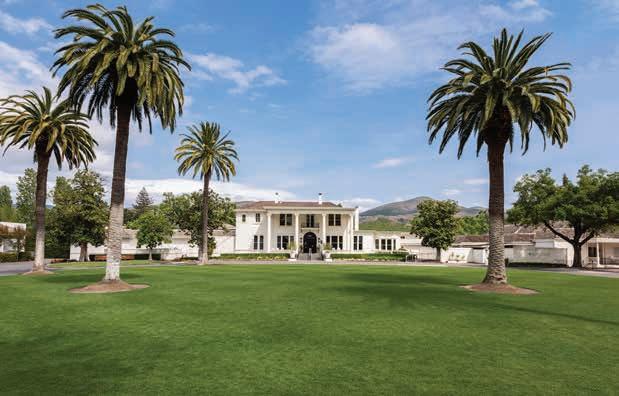

Situated amongst the stunning red rocks of Sedona’s Boynton Canyon, this is one of the most dramatic places to play. After a few rounds, pull up for a prickly pear margarita at sunset at Che Ah Chi’s patio lounge.

Pickleball in paradise, anyone? Situated on the stunning Kona-Kohala coast of Hawaii, the Four Seasons offers access to two courts, with pickleball clinics every Friday morning.


We revisit the quintessential summer dip that has been getting the star treatment in Sunset for nearly a century.

Guacamole is recommended as an appetizer for a chili con carne party. The suggestion to mash “not too fine” is nuanced. The use of French dressing instead of citrus juice is not.

Pomegranate seeds were suggested as a garnish.
In the 125 years that Sunset has been covering the West, one recipe has appeared in the magazine more than most: guacamole. It’s a dish that’s quintessentially Western, thanks to the region’s freewheeling approach to cuisine, its Mexican past and present, and the abundance of ripe avocados. There have been highlights (a recommendation to char your own chiles for fire-roasted flavor, if you’re the kind of person who adds chiles to yours) and low points (substituting Sauternes for lime juice), but it’s core to who we are, even making an appearance on the cover and inspiring a gardening guide to growing your own avocado trees. Here we reprint a recipe originally published in May 1970 that stands the test of time, along with a timeline of some of those high (and low) points.





IN 1970 WE CALLED GUACAMOLE THE “SAUCE OF THE AMERICAS” AND PUT IT ON THE COVER. THIS VINTAGE RECIPE ASSUMES ACCESS TO WEST COAST INGREDIENTS LIKE FRESH HERBS AND CITRUS.


1 large, fully ripe avocado (10–12 oz.)
1 Tbsp. lime or lemon juice
1 to 2 Tbsp. finely minced onion or green onion
1 tsp. minced fresh cilantro
1–2 tsp. minced canned California green chiles (seeds and pith removed)
¼ tsp. minced, canned, small hot chiles (such as jalapeño) or a few drops liquid hot pepper seasoning (optional)
Salt to taste
Peel and pit avocado and mash coarsely with a fork, blending in lime juice. Mix in onion to taste cilantro, green chile, hot chile (or liquid pepper to taste), and salt to season. Serve at room temperature or chilled; cover to refrigerate up to 3 days. (To freeze, do not add onion until mixture is thawed for serving.) Makes about 1 cup guacamole.
An artichoke version substitutes artichokes for avocados and is dubbed “chokemole.”
Chili bean paste and five spice powder make an appearance in a fusion-era Sichuanstyle version.
The west rim is heart-pounding, soul-searching, bucket-listchecking adrenaline rushes you’ve never felt or seen before, including one of the largest glass cantilever bridges in the world that will have you stepping 4,000 feet out over the Grand Canyon floor. Skywalk is just one of the ways you can jolt your senses and ignite your spirit at Grand Canyon West. Plan your adventure today.

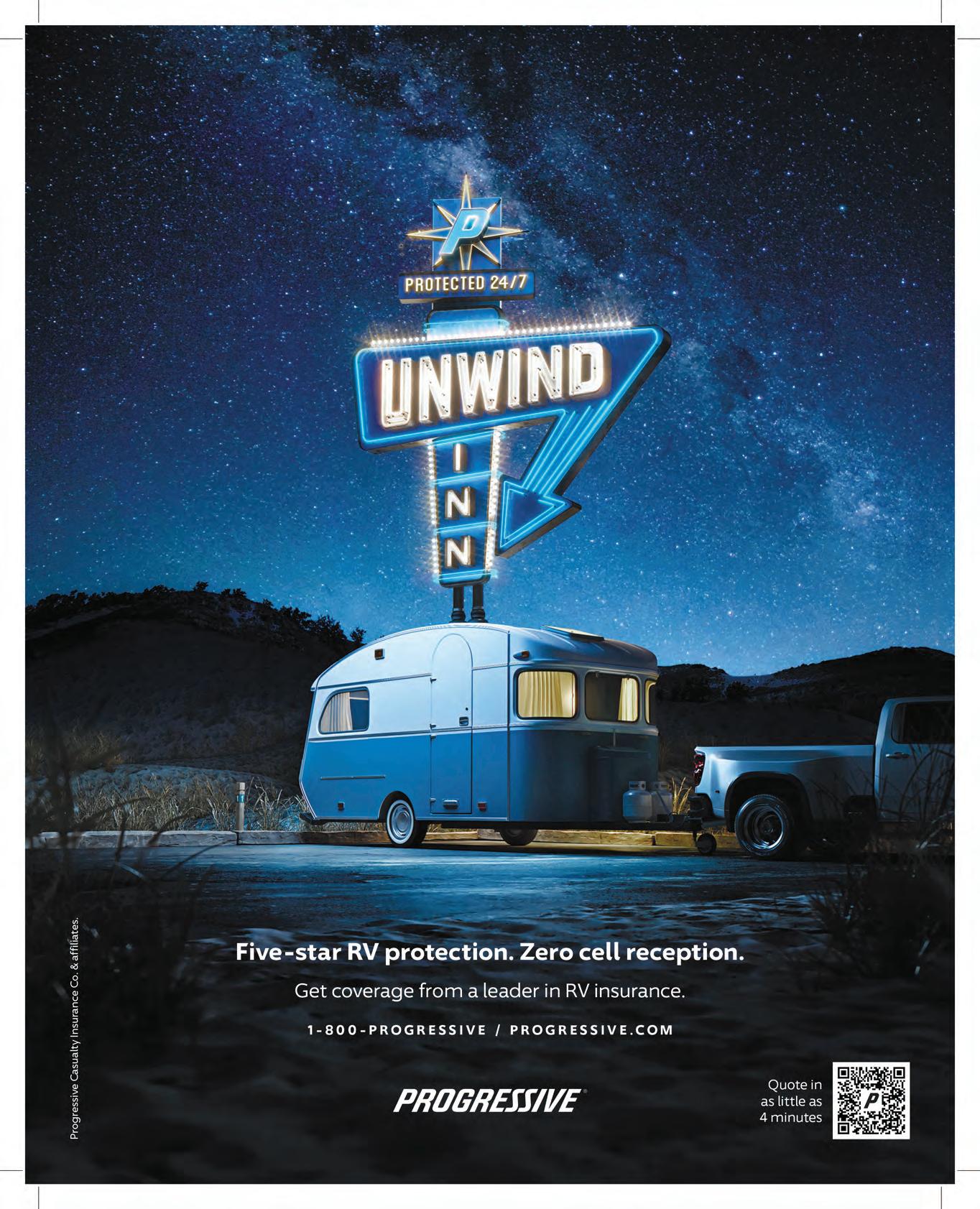
An interior designer rebuilt her own modern ranch from the ground up, creating an architecturally intriguing, multilevel family home with easy access to the great outdoors.
 Story by CHRISTINE LENNON • Photographs by THOMAS J. STORY
Story by CHRISTINE LENNON • Photographs by THOMAS J. STORY
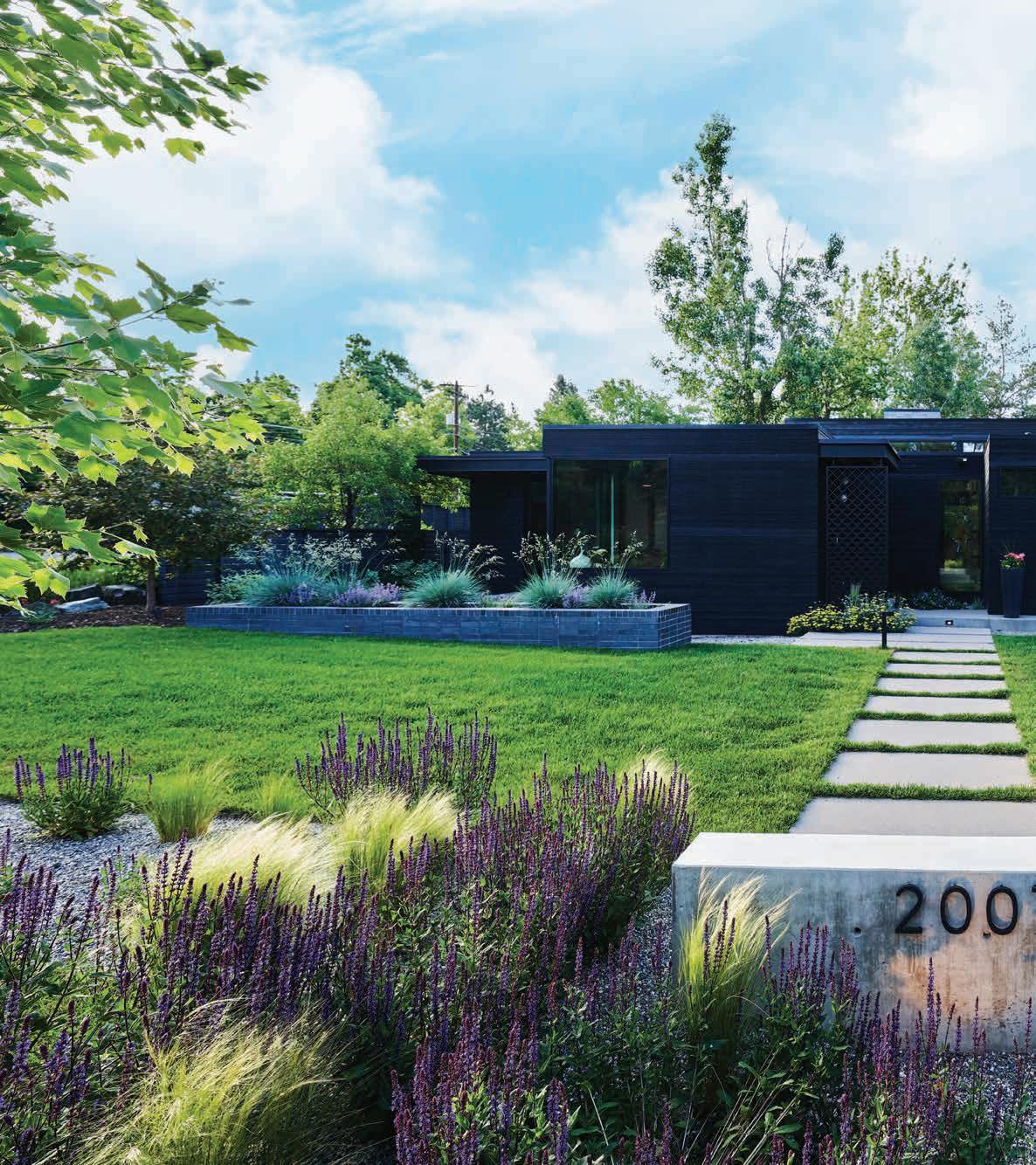
hen Stephanie Waddell, founder of Colorado-based Istoria Interior Design, moved from Chicago to Boulder with her husband, Greg, and her young son, Ames, she was looking for the kind of mountain-adjacent life that makes people fall in love with the West. She wanted a home with room for her family to grow, with great views of the surrounding landscape, a layout designed for entertaining friends in the close-knit community, and the expansive feeling of open space that fosters a connection with nature. They found a 1970s-era modern house on a double lot in a great neighborhood, with a Japanese-influenced garden that had been written up in the local press when it was first designed.

There was only one problem.
“The ceilings in some of the rooms were not even eight feet high,” says Waddell. “And I’m six feet tall. My husband is tall. We had a feeling our son was going to be tall. The house was dated and cramped and long-
term, that just wasn’t going to work.”
The move also facilitated a career shift for Waddell, a fine arts major who’d spent time working in the Chicago gallery world then founded a home textile business with patterns of her own design.
“Shortly before we moved to Boulder, I realized I didn’t love product sales or dealing with factories. I’d always worked around the interior design world and was attracted to it,” says Waddell, who designed their house in Illinois, which was featured

1 / Waddell countered her architect’s minimalist steel-and-glass aesthetic with “quirks” like geometric tile, vintage furniture, and a colorful mix of textiles.
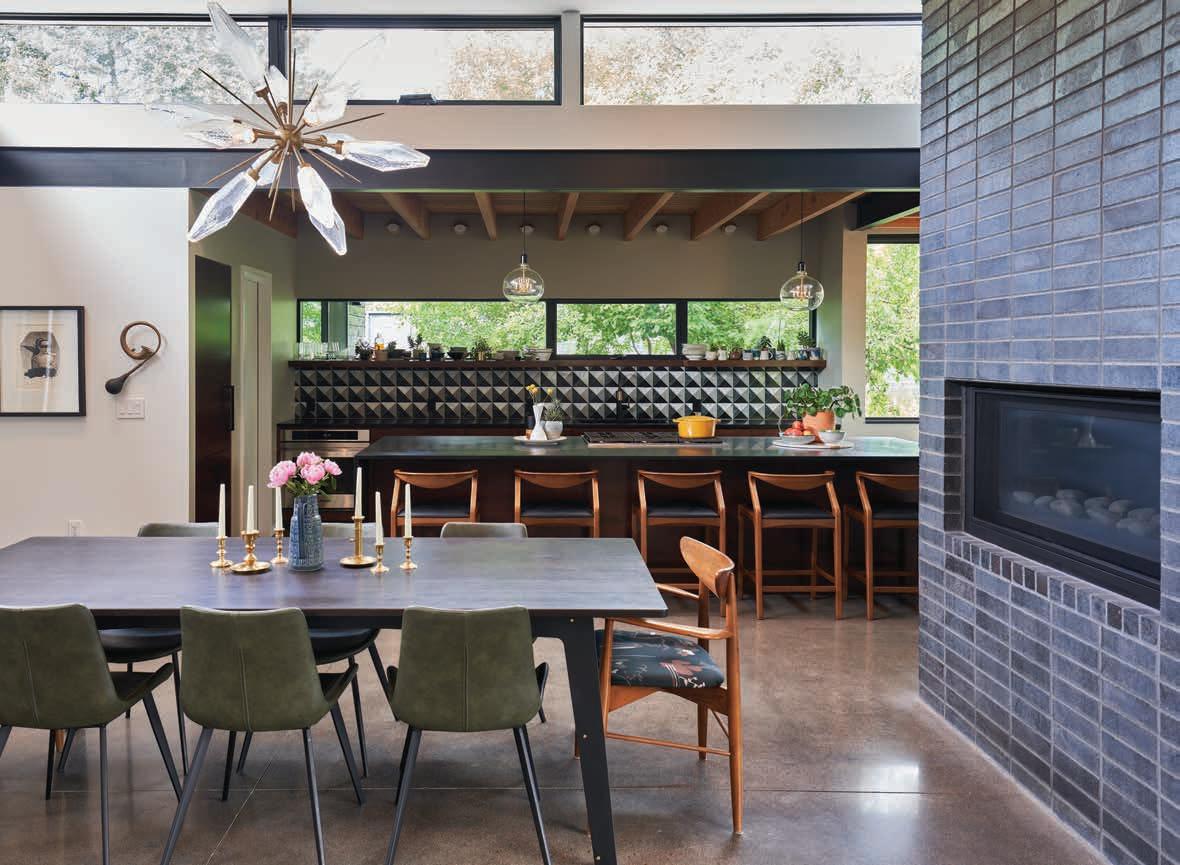
in a local Chicago design magazine. “It made me think I had some skill for decorating, and I went back to school to get my master’s in fine art in interior architecture.”
In the interim, she put her education-in-progress to the test when she decided to tackle the renovation of her own home. With the help of two of her closest friends, architect Renée del Gaudio and builder Dan Flohrs of Coburn Partners, they tore down the house until only the foundation remained.



“It was a risky decision to work with two people I was so close to. It doesn’t always pan out so well for friendships. But in this case, it was wonderful. We were great collaborators,” she says.
Del Gaudio used the existing footprint to create a two-story modern home with walls of windows that open up to the outside. The façade of charcoal brick and black-stained cedar siding blends into the surrounding landscape. There are multiple fireplaces, covered outdoor living rooms, and a firepit that has been the locus for most of their socializing over the past three years regardless of the weather. The garden is planted in a series of squares with a restricted palette of purple flowers, but it doesn’t appear overly rigid or structured. Some of the original Zen garden elements, like trees, remain. The doubleheight living room has some clever, minimal storage options, and Waddell’s skillful use of houseplants,
4 / Stephanie, her husband, Greg, their son, Ames, and their pug, Penny, spend as much time outdoors as possible.
3 / The view from the top of the room-dividing shelving unit.well-curated keepsakes, colorful, geometric tiles, and collected textiles adds texture to the concrete, glass, and steel structure that keeps everything from reading too chilly. The exposed joists in the ceiling that reveal the warm wood beams add to the rustic, modern feel. And now the house has become her professional calling card.
“Every designer wants to design their own house as a really good portfolio piece,” she says. “It’s interesting because the two projects I’ve completed that have gotten some attention were the ones where I had full creative rein!”
Judging by the brisk pace her business has grown over the last decade, Boulder needed Waddell’s expertise.
“I finished school a couple of years before the pandemic, and then in 2020, my business exploded,” she says.
A highlight of the home is to be the second-floor primary suite, with a small adjacent art studio and an attached deck with a fireplace. Thanks to a couple of ingenious heated chairs, it’s an all-season retreat.
Del Gaudio is frequently asked to build larger mountain houses for clients who want fairly absurd square footage, Waddell says, but that’s not her aesthetic. While the double-height living room and the 12-foot clearance in the kitchen—tailor-made for tall people—creates the illusion of a massive space, it’s accomplished in a relatively modest 3,000 square feet (which includes a new rec room off the garage).
“I look at that beautiful wood on the ceiling when I lie in bed in the morning, and the color from the trees and sunshine and light flooding in through the windows, and it feels so warm and lovely,” Waddell says. “It’s important to work with an architect like Renée who’s really sensitive to site-specific building. In this house, you can feel it.”
1 / In Ames’s room, an upholstered headboard gets the teen treatment with iron-on patches.

2 / Sunny yellow upholstery, a muted vintage rug, and a three-arm pendant light cheer up a home office.

3 / A vintage card catalog, bought for pennies from a library that was closing, traveled with Waddell from Chicago. It functions as storage for office supplies and keeps clutter out of sight.

The contrasting finishes of gray brick with a metallic finish and stained cedar siding add visual interest to the modern exterior. A passthrough kitchen window opens to an outdoor bar.
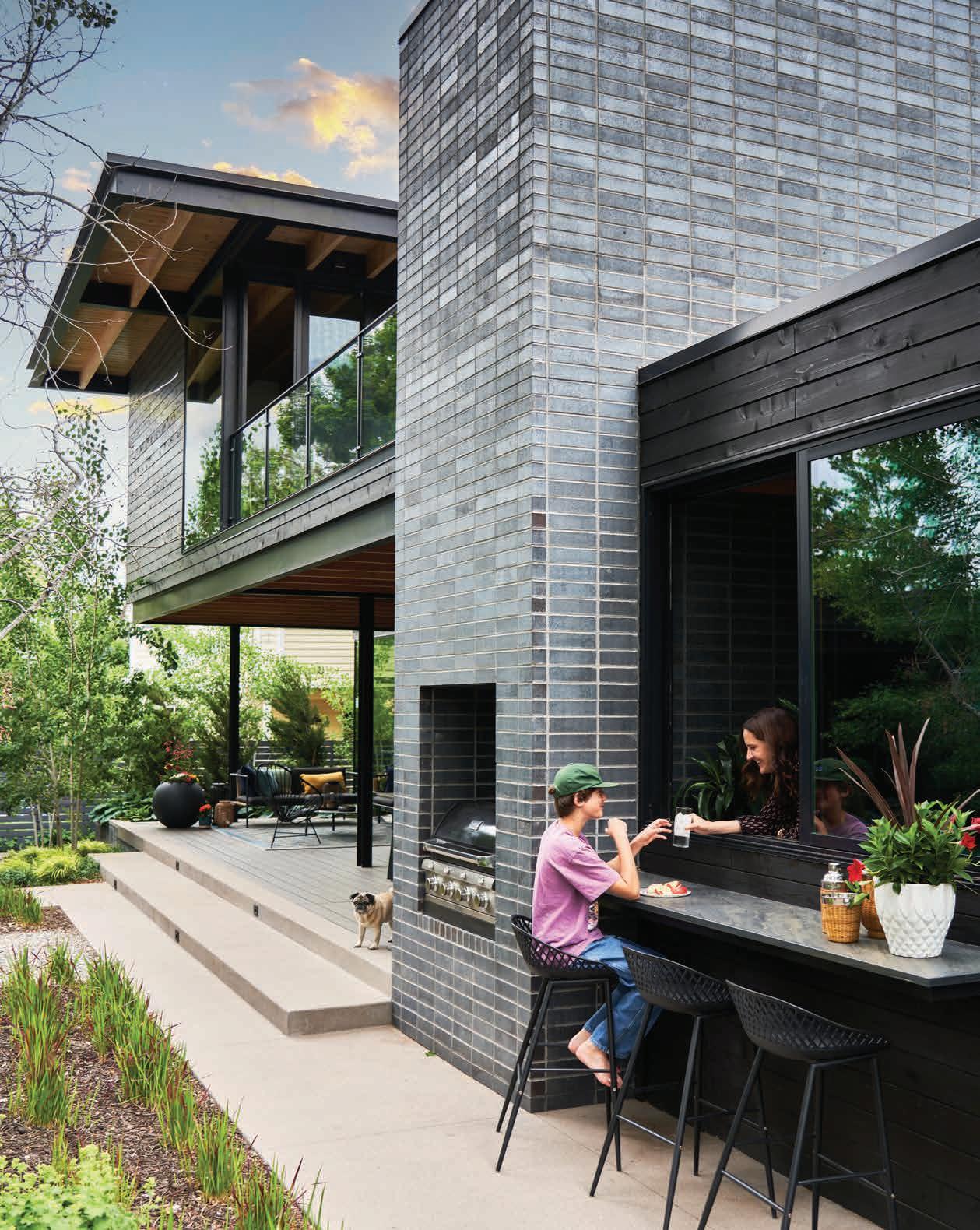
 A built-in dining nook with windows on two sides takes advantage of lush garden views. The gray brick is featured indoors and out.
A built-in dining nook with windows on two sides takes advantage of lush garden views. The gray brick is featured indoors and out.


 1 / Hand-painted tile from Tabarka Studio in a simple pattern covers one wall of the primary bathroom.
2 / Waddell fills custom shelves, which define the boundaries of the open room, with low-maintenance houseplants and carefully arranged books.
1 / Hand-painted tile from Tabarka Studio in a simple pattern covers one wall of the primary bathroom.
2 / Waddell fills custom shelves, which define the boundaries of the open room, with low-maintenance houseplants and carefully arranged books.

“I look at the color from the trees and sunshine and light flooding in through the windows, and it feels so warm and lovely.”


STARTING WITH A SPLIT SINGLE-FAMILY LOT IN SEATTLE’S CENTRAL DISTRICT, A LOCAL DESIGN/BUILD/ DEVELOPMENT FIRM
ERECTED TWIN TOWNHOMES THAT ARE A TEMPLATE FOR THE FUTURE OF HIGHDENSITY, HIGH-STYLE HOUSING.

he oxidized corten steel exterior is the first thing passersby notice about the two townhomes occupying a corner lot on Seattle’s Alder Street. The exterior, with its large windows and modern lines, is a break from the norm in the neighborhood landscape of cottages and Craftsman bungalows. But the rust-tone steel echoes the color of the brick façade of the high school across the street, and the pitch of the roof matches that of the homes nearby, and, improbably, it all works. It’s like a new patch stitched into an everevolving urban quilt.
“The other day someone pulled up and parked in front of the house and started asking us questions about it,” says Brent Large, who lives in one of the two houses on the newly
developed lot with his wife and two children. “I’ve never lived in a house where people just walk up and tell you how much they like it.”
Robert Humble, a principal of Hybrid Architecture and the lead architect on this project—who’s been spearheading similar, community-focused projects in the neighborhood for the past 15 years—had a vested interest in the success of this corner lot construction.
“I live about five blocks away,” says Humble, whose team also acts as developers, finding unused lots and spaces to create “in-fill” housing that increases the population without compromising local character. “People who own properties in the area contact us and give us ‘editorial
control’ of their lot that benefits the community. We build housing that doesn’t displace our neighbors and retains the streetscape and characteristics of the neighborhood.”
In this case, a friend of Humble’s who owns a local brewpub approached him about a house he owned with an oversized but under-utilized side yard to discuss potential ways to increase the property’s value. “We kept the existing house, which was a nice little Craftsman,” he says.
“Plus, we were able to develop that empty yard and squeeze in a couple more units of density.”

The homes Hybrid builds are simple, 20-by-20 foot boxes with steel rooftops and stained cedar siding. They have front stoops with stairs that lead to two entries on
 The Large family purchased one townhome and added custom touches like an extended island and color-rich cabinetry.
The Large family purchased one townhome and added custom touches like an extended island and color-rich cabinetry.



Opposite (clockwise from top): the striking corten steel exterior; a stairwell provides sunlight for houseplants; a bedroom embraces the
Scandinavian design ideas of simplicity and highimpact color. This page (clockwise from top left): A lower-floor ADU was redesigned to accommodate two
kids’ bedrooms with sleeping lofts; a floating vanity and Vigo fixtures maximize a minimal bathroom; a sunny top floor office/video game center.


separate sides of the property, in another nod to adjacent bungalows. Each of the multi-story units has a flexible ground floor with its own private entrance, so it can function as a rental apartment. Bedrooms occupy the first floor, a living and dining area is on the second, and a flexible loft space, illuminated by skylights, is on the top floor.
“A lot of houses in Seattle have roof decks on the top level to get the view
of the mountains, but I think that’s a missed opportunity,” says Humble. “It’s often too cold and windy to really enjoy it, and you miss a chance to capture light.”
This loft alternative and the homes’ upside-down layout allows the daylight to pour into the common rooms in a way that’s uncommon in typically sun-starved Washington. “The interiors of our units were inspired by Scandinavian precedents, such as access to light, access to views, and accents of wood. The historic culture of Seattle is Scandinavian, and our climate is very similar. It’s a neutral container for an individual’s taste and style.”

Enter the Large family, who contacted Hybrid after spotting another one of its recent constructions during an online house hunt. They were living in Denmark at the time and were planning to return to the U.S. after nearly 10 years abroad. They’d been spoiled by the urban ease of Copenhagen, where they rode bikes as their primary form of transportation and fell in love with the warm-minimal design that city is known for.
“We were looking for housing in Seattle back in 2020, and it was a bit depressing,” says Large. “One of the new local zoning rules allowed for townhouses, which was a more affordable alternative to single family housing, but so many of them are cookie-cutter and not great. We saw a project Hybrid had completed a couple of blocks away and were really in-
terested in their work. So, in 2021 when my wife secured funding for her video game company and we were ready to move, we contacted them to see if anything was available.”
Hybrid informed them that they’d recently broken ground on the Alder property, and the family was able to purchase the house and make some key collaborative changes during the construction process. The groundfloor apartment was transformed into

THE HOME’S UPSIDE-DOWN LAYOUT ALLOWS THE DAYLIGHT TO POUR INTO THE COMMON ROOMS.
The original kitchen design features white countertops, a small dining area, and wood cabinet facings.



The Larges sacrificed a window for more storage. Cabinets are finished in Benjamin Moore Oasis Blue and Golden Gate.

two bedrooms and a bathroom for the son and daughter. And the Larges were able to choose custom finishes for the kitchen cabinetry and baths in a cheerful palette of gold, blue, terracotta, forest green, peach, and teal. It was a low-cost, high-impact way to put their own spin on what’s essentially a builder’s spec house. The result is the perfect union of architect and owner… and the owner’s cheerful collection of Danish furniture.
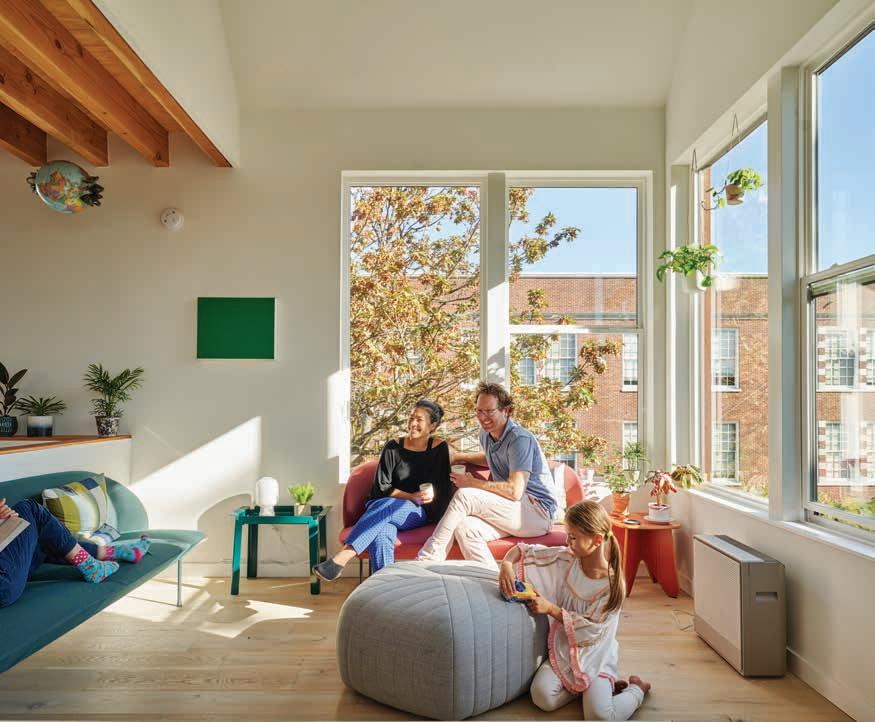

“There are a couple of affordable auction houses in Copenhagen where they sell furniture that’s been used for a trade show, or floor samples, so we got almost everything at a discount,” Large says. Before they left the country, they purchased a pair of Muuto sofas, two Jørgen Gammelgaard maple tables, and a Normann Copenhagen desk. These colorful, low-profile pieces work well in the small living room that has nine-massive windows to create the illusion of a more expansive space. The second house on the lot, which was built according to Hybrid’s original design, is occupied by a single owner who rents the ground-floor studio to a friend.
What the Larges love most about their new home, though, is that it almost replicates that tight-knit urban experience they grew to love in Copenhagen. “We’re close to libraries, restaurants, grocery stores, and the like. We definitely need a car here, but the kids walk to school and to friends’ houses. We go to the track at the high school across the street to run.” The neighborhood and the city have become the family’s backyard, and they see no need for a larger house. “And it’s true, we’re very visible here on the corner here,” says Large, “and we do get a lot of attention.”
This unit features a traditional bachelor-pad layout with a sectional sofa and media console.Danielle Dall’Armi Hahn grows over 40,000 roses at Rose Story Farm in Carpinteria, California. She fell in love with her grandmother’s fragrant blooms, and now prizes “old world” roses with enticing scents.
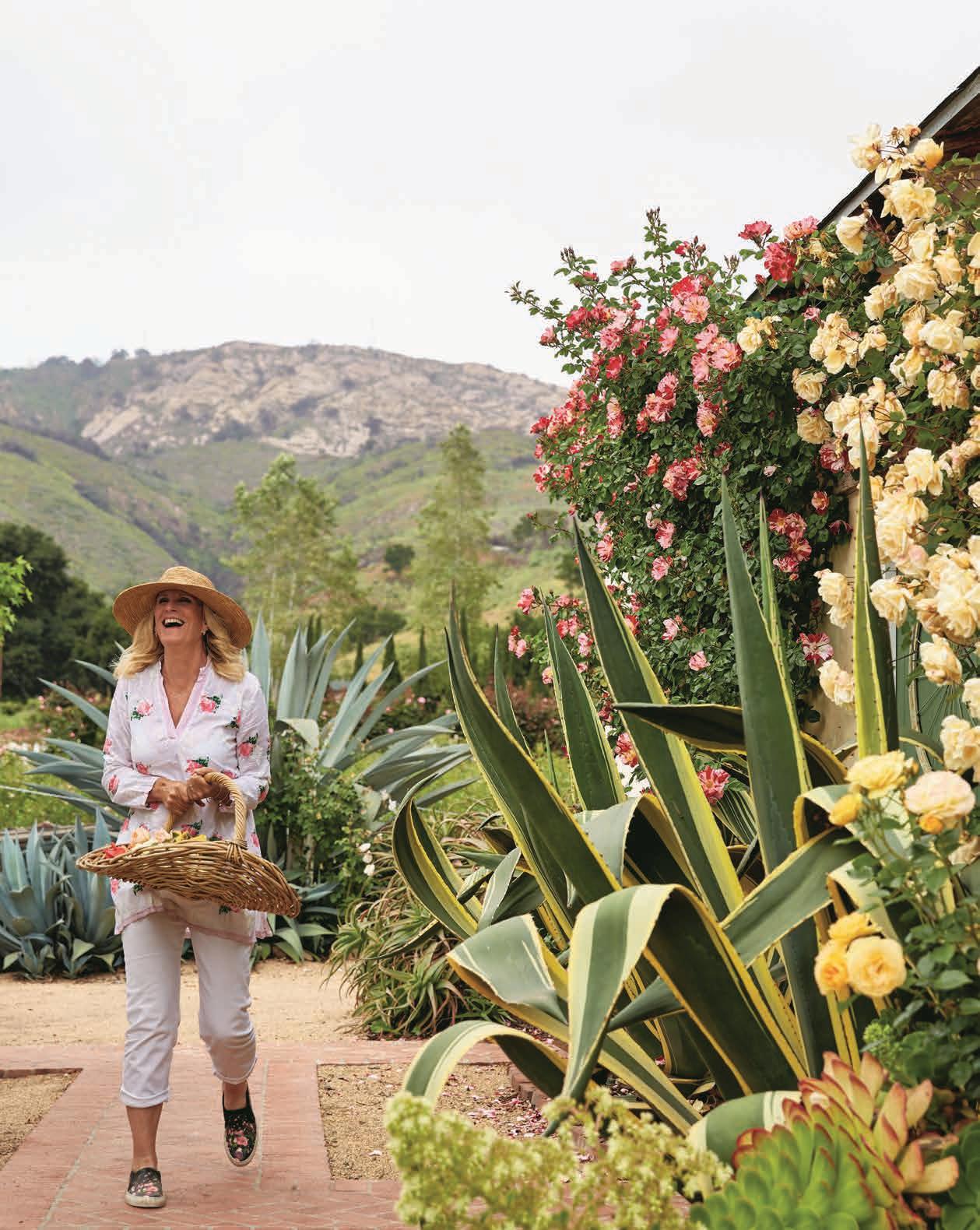
Grow lemongrass for cooking. Root fresh stalks in a glass of water, then plant outside in a container at least 16 inches wide. Lemongrass prefers moist soil and monthly fertilization.
Set out seedlings of cucumbers, eggplant, melons, peppers, pumpkins, tomatoes, and squash. Sow seeds of beans and sweet corn.
Instead of thirsty annuals, use colorful low-water plants along a border. One of our favorite combos: powder blue Euphorbia ‘Blue Haze’, lime-green Carex oshimensis ‘Everillo’, and compact succulents.
Lure butterflies and hummingbirds to your garden by planting ‘Hot Lips’ sage, an evergreen shrub that produces red-and-white flowers throughout the summer.
For showy flowers that entice you to stay outside longer, plant a night-blooming cactus garden. Try the Andes organ pipe (Cereus hildmannianus), Arizona queen of the night (Peniocereus greggii), or queen of the night (Harrisia bonplandii).
Rose curculios and rose midges may cause everblooming roses to drop their buds before they open. To control these insect pests,
regularly prune off and destroy any buds that don’t unfurl properly.
Check plants for spider mites and blast any fine nets of webbing on the undersides of leaves with a strong jet of water, or apply insecticidal soap. Repeat until eradicated.
Don’t panic if you find a swarm of bees in your yard this time of year—they are usually docile and leave after a few days. If you discover a hive and want it removed, reach out to your county’s master gardener or visit beeculture.com for a directory of local beekeepers.
Along the coast, water early in the day to allow leaves to dry during the overcast, humid days of June; wet leaves are vulnerable to fungal diseases like powdery mildew.
Resist the urge to over-irrigate established natives and other Mediterranean-climate plants. They have evolved to survive long, hot dry periods.
Finish pruning citrus trees for size and shape. Remove crossing or dead branches, cutting out entire limbs rather than making cuts at the tips, as that results in excessive new growth.
Warm weather has finally arrived! Here’s what to do in your garden now.
WONDERING HOW TO MATCH GARDEN ROSES WITH THE EXTERIOR OF YOUR HOME? THIS EXCERPT FROM THE COLOR OF ROSES BY DANIELLE DALL’ARMI HAHN (TEN SPEED PRESS, $35) WILL TAKE OUT THE GUESSWORK.


> With natural materials, such as stone and wood, just about any color works. With brick, use pinks, yellows, or even a contrasting color such as lavender.
> When choosing rose colors for a painted wall, use more saturated tones. Select a color that is close to the wall color but deeper, making sure the rose color is dominant, not the wall color.
> Pure, bright colors have energy and are exciting. They are easy to select, but a word of caution: Use thoughtfully and with restraint, as a little goes a very long way. Just a few red, orange, or yellow blooms will liven up a planting bed of muted or softer colors.
> For cutting gardens, no rules apply, since these beds of flowers are grown specifically for cutting and use in floral arrangements, not for their landscaping attributes. Designate an area that can be easily changed or amended when new colors catch your interest. Plant colors you like and that complement your home interior. Also consider roses that can be cut and gifted. There is nothing sweeter than a rose bouquet cut from a home garden.
WOOD AND FAUX BOIS GARDEN STOOLS ARE EVERYWHERE RIGHT NOW. THEY CAN BE USED IN THE GARDEN, OF COURSE, BUT THEY’RE GREAT FOR THE HOME, TOO. HERE ARE SOME OF OUR FAVORITES.
Handcrafted with sustainably harvested wood from California, each stool comes out as unique as the substantial yet curvy design.
$1,400, ORCALIVING.COM

Part of an ongoing collaboration, this spa-worthy stool was designed by the celebrated Mermelada Estudio in Barcelona and is made of repurposed Indonesian teak. $249, CB2.COM
STUMP STOOL by Kalon Studios


This modern and minimal take on the stump stool is cut from a solid block of green wood and left unfinished, so it will patina over time.
$390, SHOPHORNE.COM
FAUX-WOOD STOOL by COSIEST
Lightweight and water- and weather-resistant, this faux-wood stool has a carefully crafted biophilic design, and the price looks great, too.
$103, OVERSTOCK.COM

THE SIDE YARD IS THE NEW FRONTIER IN RESIDENTIAL LANDSCAPE DESIGN. HERE’S HOW TO TRANSFORM YOURS INTO A PETITE RETREAT.
As a garden editor, I’m always looking for ways to maximize the beauty and functionality of my yard. Recently, when a friend of mine turned her side yard into an outdoor living room, I was inspired. Turns out I’m not the only one. Yardzen, the online garden design company, has seen an uptick in requests for side-yard designs. With home-loan interest rates the way they are now, people would rather improve their existing home than buy a new one. But side yards have their own set of challenges.
According to Yardzen, the absolute minimum amount of space for a dining or firepit area is six feet by six feet. Meanwhile, vegetable gardens can be tricky. “Being sandwiched between tall fences and walls, side yards often have limited light,” says Kevin Lenhart,
Yardzen’s design director. “But as they get wider, they often get brighter, especially if they’re exposed to southern or western light.”
So, what if you only have five feet to work with? Not a problem, says Scot Eckley, a landscape designer in Seattle. In his space, he was able to squeeze a small grill on one side of the house and a clothes-drying rack and a potting area on the other. Other ideas include an outdoor shower or meditation area.
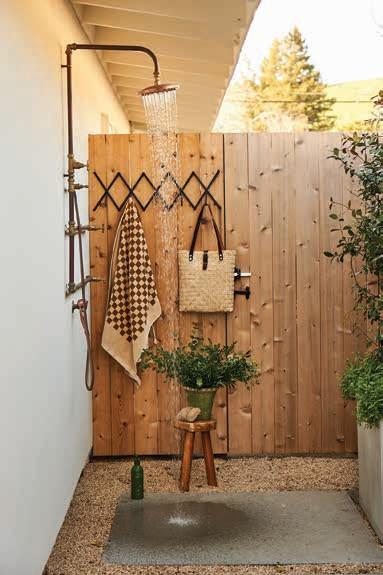
In other words, creative side yard solutions are many—some Yardzen clients have put in plunge pools. “If done right, side yards can give you a dose of privacy and intimacy,” Lenhart says. “And [with the right lighting] an average patio table can be turned into a magical alfresco dining destination.”

WITH A PORTFOLIO OF HIGH-PROFILE, SLIGHTLY WILD, FORWARD-THINKING GARDENS, TERREMOTO IS THE LANDSCAPE DESIGN FIRM WE NEED MORE THAN EVER.


day I meet David Godshall, one of the founding members of the progressive landscape architecture firm known as Terremoto, I climb the concrete steps outside his home in East Los Angeles, open a worn hinged gate, and see his garden for the first time. What I find is not quite what I was expecting, yet it makes perfect sense. Rather than the composed plants and austere rigor of the poolside landscaping Terremoto designed for actor Mandy Moore, for example, Godshall’s own garden is a tangle of mostly native and low-water plants, placed in a way that seemed haphazard but that the plants seemed to love. A dirt path is surrounded by bursts of unruly pitcher sage, sprawling California buckwheat, and Ceanothus ‘Ray Hartman’ all flourishing under the canopy of a Western Sycamore. Cross-sawn timber planks from fallen local trees that otherwise would’ve been pulped weave through the yard like mini-bridges for his kids to play on. Raised beds tumble down the slope. A fashionable composter (yes, there is such a thing) sits under the eaves of a house that’s been painted black. Meanwhile, in one corner, a clawfoot castiron bathtub sits on a humble wood-plank base. This, I find out later, is where Godshall likes to bathe.
Like any great garden, Godshall’s is a work in progress, but every element has a purpose and a benefit, and while it’s a little bit wild and by definition organic, it’s thoroughly considered and totally works. It turns out that Godshall and his partner, Alain Peauroi, founded Terremoto—the word means earthquake in Spanish and Italian—at this house in 2014. Since then, they’ve set off an upheaval of sorts in the garden world with a design sensibility that’s tranquil in execution while also being built on progressive maxims of how gardens should be made. These maxims incorporate climate, fair labor, and water concerns, along with a strong leaning toward regionally appropriate native or climate-adapted low-water plants, and the preference for a considered yet slightly unkempt look that’s good for biodiversity and looks fantastic.
Sexy gardening combined with seemingly unsexy principles has made Terremoto a huge success. Godshall and Peau roi have taken on two more partners, Jenny Jones and Story Wiggins, and their offices in Los Angeles and San Francisco employ some 24 staffers, and complete approximately 25 residential and commercial gardens each year. They’ve twice made the AD 100— a list of the top interior and garden designers in the country, while their projects are a heady mix of the humble and the high-end. Terremoto does everything from residential gardens for the creative working class to photo-shoot-ready landscapes for celebrities like Kirsten Dunst and the Beastie Boys’ Adam

Horovitz, to corporate jobs such as a 650,000-squarefoot project for Dropbox (which was completed right before the Covid shutdown of March 2020), along with the gardens at Platform Park in Culver City. They also excel at prestige projects like the historic residential architectural experiment Sea Ranch Lodge, 100 miles south of San Francisco. When someone with a Schindler, Eichler, or Neutra needs a garden, Terremoto is often who they call.

Yes, Terremoto is cool. But they’re also deadly serious about being cool to plants and animals and people, which, yes, makes them even cooler. They give potential clients a “syllabus” on how they work. Like the syllabi you may have gotten in college, theirs is organized by subject: “Climate Change and Ecology,” “Land and Labor,” and “Community, Context, and History.” It’s a document that says things like, “Terremoto believes [gardens are] mirrors of our wider society, reflecting the complex social, ecological, and economic forces that shape our past, present and future. In that way, gardenmaking [sic] is an inherently political act and a reflection of our individual and collective priorities and values.” In other words, Terremoto is here not only to do what they refer to as “gardenmaking” but to make the world a better place, one garden at a time.
Opposite: Designer Hannah Pae’s beautifully rendered plan for Sara Kramer’s garden (see previous pages for the end result). This page: native bunch grass, Australian shrubs, and other droughttolerant plants in actor Kirsten Dunst’s Los Angeles garden.
WHENI find Godshall and one of his partners, Jenny Jones, they’re sitting on mismatched chairs in a nook that’s walled off by lots and lots of plants. In person, he comes across as anything but strident. Godshall is soft-spoken, bearded, and wears a worn Terremoto baseball cap along with an approachable “we’re just chatting about stuff we love” demeanor. Jones, meanwhile, describes herself as a “dirty hippy” at heart, and wears a similar baseball cap atop her long, blonde braids.
While Godshall is the most outspoken of the team, he’s quick to point out his partners deserve as much credit for Terremoto’s work as he does, and Peauroi, Jones, and Wiggins are each super talents in their own right. Nevertheless, Godshall is usually pegged as the firm’s Philosopher King. It’s a designation he likely hates. Then again, it’s pretty much on the money. Perhaps this is because he’s the one who writes the long, meandering but eminently readable text on the website, or because he talks with a humble but knowing authority, not unlike music producer Rick Rubin. He’s also the guy picking worthy fights on social media—for example, kindly but forcefully challenging the Gamble House in Pasadena for its expanse of water-hogging green lawn.
Godshall and Peauroi first met in San Francisco, where
they were working at the same landscape architecture firm. “It wasn’t this plotted plan to leave and do our own thing, but we did have a few Chinese food lunches where we discussed the possibility of doing landscape architecture differently,” Peauroi says. “We’re not very dogmatic about any of it,” he adds. “The only thing we insist on is listening to the land and letting that guide the project.”
Since the two met, the company has expanded, as have Terremoto’s ideas about the role of a garden in a broader cultural and ecological context. Godshall says, “Increasingly we’re like, ‘Well, who are we making these gardens for?’ And then as we think deeply on that, we realize that even a loved garden is probably used and occupied by its humans 10 to 20 percent of its life. So [the



garden] can have a usefulness beyond its usefulness to humans. The native plants are useful to the wildlife that co-evolved with them. Pair that with the fact that we live in this kind of fraught moment has brought us to where we are now.” Or, to put it more succinctly, per the syllabus, “[Terremoto considers] ways to create less human-supremacist garden spaces that welcome rather than reject birds, bees, and other animals.”
As a result of this clear-eyed intentionality and generosity, they’re now able to turn down clients. “We’re in this very fortunate position where we’re not hungry for work, which makes us kind of dangerous in a way,” Godshall says. “Because then sometimes people will be like, ‘You don’t want to do my project?!’ ” As a garden nerd and native-plant enthusiast myself, I find this equally human-centered and nature-centered line of thinking thrilling.
But not everyone does. Occasionally, a potential client sees the website, Instagram, or an image on Pinterest and thinks, This is what I want. The client then meets with Terremoto and maybe tells them they want a new swimming pool installed in their backyard. Terremoto, however, is in the process of thinking about how they feel about new pools, and what environmentally conscious alternatives there could be, such as a cedar soaking tub or a natural pool. What is a firm to do? “If they want something different, we don’t tell them, ‘You’re a bad person,’ ” Godshall says. “We just say, ‘We’re not the office for you. We wish you all the best.’ We’re trying to navigate our principles with kindness and not shame.”
“Who are we making these gardens for? Even a loved garden is probably used by its humans ten to twenty percent of its life.”FROM TOP: STEPHEN SCHAUER; CAITLIN ATKINSON (2)
Opposite (from top): A serene gravel garden at a Los Angeles artist’s bungalow; raised beds and an undulating wild grass meadow designed to echo the rolling hills of Point Reyes; minimalist seating areas tucked into ravishing and abundant plantings are a hallmark of many Terremoto designs.

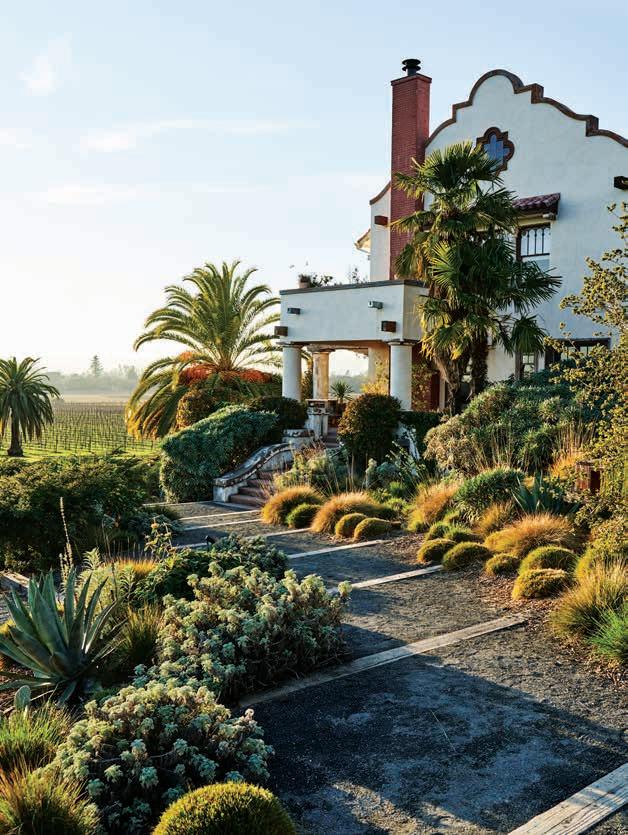
This page: (clockwise from top): The garden at the early20th-century hacienda at Scribe Winery in Sonoma incorporates dramatic native trees among the vineyards; Terremoto co-founder Alain Peauroi (far right) and the San Francisco team; newly installed landscaping at Sea Ranch Lodge in Sonoma.
WEstroll down the street to see a garden Terremoto recently installed for Godshall’s neighbor, Sara Kramer, one of the chef-owners of the popular restaurant Kismet in Los Feliz. We chat about Terremoto’s decision to stop growing as a company, which is exactly the kind of thing one would expect of Godshall, who is by all accounts a punk rock fan and whom I like to think of as gardening’s answer to Ian MacKaye of Washington D.C.’s leftist punk band, Fugazi. Godshall can’t help but smile at the comparison. “Good punk rock bands like Fugazi, they walked their talk. And I would like to think that our office walks our talk,” he says.
Walking the talk in this case involves staying “the weird little office that they are,” sticking to the ideology that’s emerged as Terremoto has evolved, and the fact that the company will probably continue not only to change with the times but to define new ideas about what this time should be. While their projects for boldfaced celebrities and companies tend to get all the attention, they make a point of taking on smaller projects. “We make
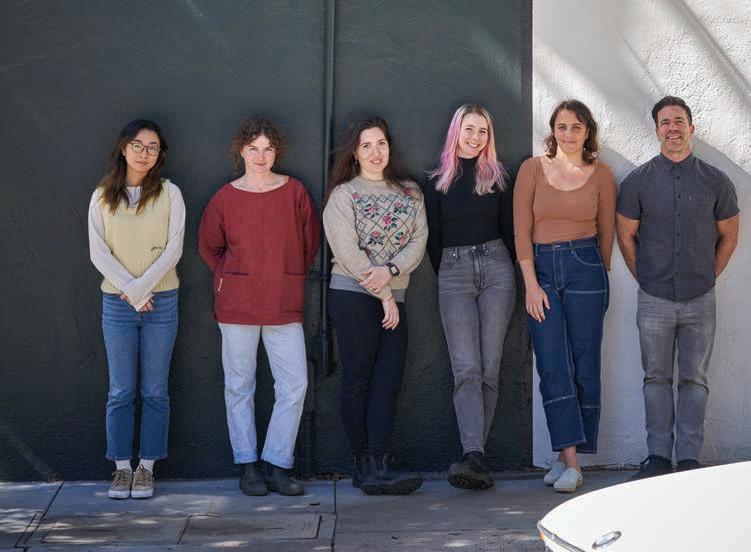

gardens for rich people, but we also make a point to make gardens for people who aren’t rich,” says Godshall. Indeed, during the pandemic the firm committed itself to doing more projects they dubbed “Radical Gardens of Love and Interconnectedness.” Which is to say projects like Sara Kramer’s hillside yard, a steep terraced mix of native plants and fruit trees and raised beds demarcated by “urbanite,” the fancy geological term for reclaimed concrete that was left over from the demolition of the previous cracked back patio. The irrigation is minimal, the native habitat budding, and the environmental impact much less than if they’d gone with thirsty non-natives and trucked in tons of new material to terrace the yard. And then there’s Test Plot, an attempt to re-wild Elysian Park in Los Angeles which, in typically heartfelt and no-holds-barred language, Godshall calls on their site “a dismal dead eucalyptus zombie forest with invasive grasses dominating the ground plane.” He also writes about how much he loves the park and what it could be. Working with the parks department and a community group and volunteer horticulturists, Terremoto is planting small zones with native plant species dating back to “pre-colonial Elysian Park” to both postulate and prove what a local park can be: aesthetically pleasing, restorative to the soul, supportive of wildlife and biodiversity, and true to place.
Which is why I leave you with this thought, again part of the syllabus Terremoto sends to clients: “The process will be both messy and beautiful, and we will make mistakes along the way. But that’s totally ok. Because trying is always better than not trying.” And the results, as you can see, are a little bit wild and incredibly inspiring.
Opposite: Along with native plants, fruit trees and edibles, like a dramatic artichoke plant, line the timber staircase in Kismet chef Sara Kramer’s Los Angeles backyard, turning passageway to produce provider.
This page (top): An outdoor shower is surrounded by a trellis on which jasmine is trained to provide aromatherapy with every bathing session.

This page (bottom): A handmade cob oven and wood grill are organic alternatives to the typical steel outdoor kitchen. A new patio was built around an established palm tree, preventing the need for its removal.

WHAT MAKES A GARDEN A TERREMOTO GARDEN? THE SYLLABUS THEY GIVE TO THEIR CLIENTS SPELLS OUT THE PARAMETERS. CLASS IS IN SESSION.
1 Rethinking hardscape projects in consideration of their carbon footprint.

2 Reusing materials on site as much as possible.
3 Considering ways to create less human-supremacist garden spaces that welcome rather than reject birds, bees, and other animals.
4
Prioritizing native and drought-tolerant plants wherever possible.
5 Have slightly uncomfortable but necessary conversations about appropriate wages and compensation both for landscape crews and gardeners.
6 Finding ways to reject the ”race to the bottom” pricing mentality that pervades the landscape and construction industries.
7 Conversations and planning about what ongoing garden care should look like.
8 Discussions about what more community-oriented private gardens could look like.
9 Designing with deep consideration and reverence for the Indigenous and native communities who occupied this land before through truth and reconciliation (financial support for Indigenous land trusts).

ANATOMY OF A LOW-WATER NATIVE HABITAT GARDEN.

 Story by HUGH GARVEY
Story by HUGH GARVEY
After 20 years of having a lawn that took, I wanted a yard that contributed: to the planet, to local animals, to biodiversity, to my neighbors, to my mental health. With the sage (native plant pun intended) design work, counsel, and collaboration of David Godshall of Terremoto and David Newsom of Wild Yards Project—and a plant-friendly paint palette from color consultant Teresa Grow—another little garden that gives was born.

Just one hour per weekend on average is all that this densely planted front yard requires of its human custodians. But what it returns is infinite: the subtle gradations of blue green going to dusty sage as sun bakes a maturing canyon prince that rightly gets its name from its original habitat and its coronal structure; the aromatic fronds of artemisia californica, a.k.a. cowboy cologne, reaching skyward; copper-hued clarkia stalks going dry at the end of summer and the attendant pleasure of snipping them onsite into mulch for the oak tree that will shade them when they return next spring; prolific swaggering poppies asserting their status as the California state flower, stopping kids and neighbors in their tracks with their blaze-orange petals; native bees sweetly napping in the chill of the morning, waiting for the sun to warm them enough to fly; blue-eyed grass and its purple and yellow flower sprays swaying in the shade of the oak. This lovely ex-lawn shelters and feeds hundreds of local insects, birds, rare bees, requires very little water and sequesters multiples of carbon over a standard lawn. Here’s how it came together.
2 botanically friendly paint colors: Paint specialist and wall paper designer Teresa Grow of Madison and Grow devised an organic and recessive paint scheme of Benjamin Moore Deep Creek and Cromwell Gray that allows the muted hues of the native plants to pop and the successional blossoms to shine as they shift from violet to sherbet and blaze orange.
9 fruit trees: Joanna Glovinsky (center) runs Fruitstitute, L.A.’s only fruit-tree service company. She transformed the parkway between the house and street into a mini-orchard of tangerines, lemons, limes, and kumquats that only require once-a-week handwatering to produce robust crops in the winter.
20+ low-water native plants: Native habitat evangelist David Newsom chose sages, buckwheats, a manzanita, cowboy cologne, bunchgrasses, mallows, monkey flower, blue-eyed grass, and wildflowers to provide harbor and food for critters and to bloom successionally season to season, so there are always flowers providing color while other plants go dormant. Godshall advocated for an equally-supportive and majestic mature coast live oak.
 David Newsom (left) and David Godshall (right)
David Newsom (left) and David Godshall (right)
7 timber steps: This ubiquitous landscaping material is used in nearly every project, but in gestural and inventive ways. Here it serves as an L.A.-style version of the New York stoop, offering impromptu seating for bird and bee watching—and an invitation to walk through the garden.

5,000 pounds of local boulders and gravel: Instead of a cinderblock and stucco retaining wall that will inevitably crack, an organic tumble of boulders from a dig 30 miles away provides nooks for wildflowers to grow and shelter for lizards and native bee populations. Permeable gravel allows water to seep through and restore the soil beneath.

2 movable lounge chairs: Lightweight but sturdy Fermob Luxembourg garden chairs (the same model used in the Tuileries in Paris) match the native succulents and can be placed in the shade or sun as desired. $1,990 FOR TWO; FERMOB.COM

1 garden hose: That’s right, no sprinklers, no drip lines, no mechanical irrigation whatsoever. After a year or so of weekly hand watering, with additional soaking during super-dry periods, the plants will be established and need very little extra water for much of the year.


On the back patio of the Dutchess in Ojai, chef Saw Naing grills up savory skewers. Here’s how to throw your own Yangon-style barbecue party.
 Story by HUGH GARVEY
Photographs by THOMAS J. STORY
Story by HUGH GARVEY
Photographs by THOMAS J. STORY
n Thursday nights when the weather’s good, the back patio of the Dutchess, a restaurant in the sleepy country town of Ojai, transforms into a smoky, slightly raucous Southern California version of 19th Street in Myanmar’s capital city of Yangon, formerly known as Rangoon. 19th Street is Yangon’s legendary barbecue row (immortalized for American foodies in episode one of the late Anthony Bourdain’s Parts Unknown), where stall after stall serves countless varieties of skewers of meat, fish, vegetables, and lots of beer. The skewers sing with ginger, garlic, turmeric, soy, and masala spices, a simple yet highly addictive flavor combination that channels the influences of Myanmar’s Indian and Chinese populations and is just the kind of thing you want to eat on a hot summer night. Bringing this experience to California had long been a dream of the Dutchess’s Burmese-born chef, Saw Naing, who for the past year has been sparking up his binchotan-fueled grills so local diners can partake in the simple delights of ginger chicken wings dipped in tangy tamarind sauce and washed down with an ice-cold glass of beer—albeit a Ventura-brewed Beachscape Pilsner instead of a Myanmar Lager. There’s live music. People dance. Naing cooks and smiles.

Naing, who moved to California from Myanmar in his early twenties and worked for Thomas Keller and the legendary Los Angeles chefs Joachim Splichal and Jeremy Fox, oversees the savory side of the menu at the Dutchess. Here you can get flaky croissants and fresh-baked breads and croques-madames and cocktails and natural wine and amaro flights and a Burmese menu with classics like tea leaf salad and the fish stew mohinga. Naing’s take on Burmese

MAKES 3 CUPS
2 cups tamarind paste
3 ½ cups sugar
1 ¾ cups distilled white vinegar

4 cloves garlic
1 tsp. minced red or green Thai chile
In a small pot over medium heat, cook down tamarind paste with 1 cup of water for about 5 minutes, until it’s a medium-bodied sauce. It should feel thicker than soy sauce, but thinner than ketchup. Add all ingredients to a blender and blend until smooth. Transfer to a serving bowl or glass jar and store in the refrigerator for up to 1 week.
cooking is distinctly Californian. He only cooks with local produce and meats, so dishes that might always be available at a Burmese takeout spot cycle in and out: Pixie tangerines augment grapefruit salad, Santa Barbara rockfish stands in for catfish in mohinga, and lamb comes from a herd that grazes the local hills for fire abatement. The exactingly prepared, wide-ranging menu and come-as-youare atmosphere of the Dutchess make it the all-day restaurant of our dreams, and Naing’s Rangoon-style skewer nights make us love it even more.
Which is how we found ourselves taking a crash course in Burmese grilling as Naing prepared a celebratory meal for his friends and co-workers, including Dutchess assistant general manager and beverage director Brittany, who is also Naing’s wife. Burmese barbecue is unfussy but full of flavor and perfect for a summer party. The trick for a successful skewer night is all about the prep. To take the pressure off party day, be sure to shop and make the sauces the day before. Thread and season your skewers in the morning. Make your rice and the salad in the afternoon: Because the salad is made with sturdy kale and cabbage, it’ll stay crisp all night long.
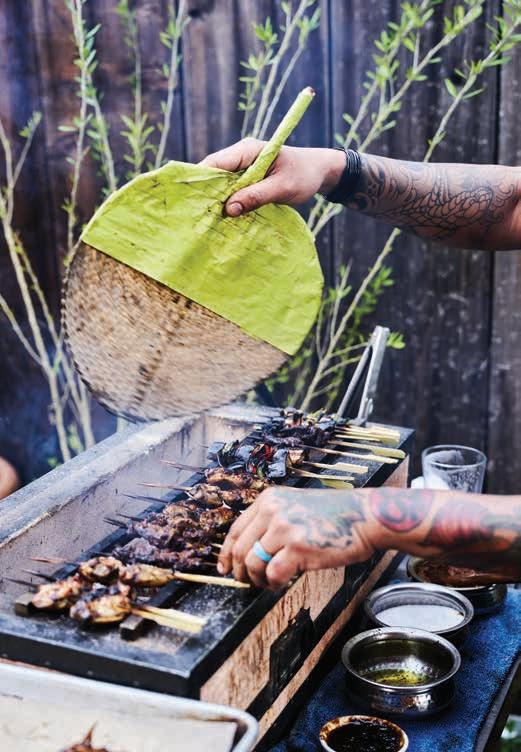

Singing with ginger, garlic, masala, and soy, the skewers are just the kind of thing you want to eat on a hot summer night.
“Beef satay is the flavor of 19th Street for me. I remember eating it when I was young in Burma,” says Naing. At the Dutchess, they grind their own garam masala, but store-bought will work just fine.
MAKES 15 SKEWERS
2 lbs. ground beef
½ cup soy sauce
2 Tbsp. honey
2 Tbsp. fresh lime juice
1 Tbsp. garam masala
1 tsp. dried chile powder
1 cup minced red onion
2 Tbsp. minced garlic
1 tsp. ground turmeric
2 Tbsp. ground fenugreek
1. In a large bowl, combine beef, soy sauce, honey, lime juice, garam masala, chile powder, red onion, garlic, turmeric, and fenugreek. Use your hands to mix ingredients until thoroughly combined.
2. Mold the meat in ½-inch balls onto the skewers. You can fit about 4 meatballs on each skewer.
3. Cook over an open flame (we use a binchotan grill at The Dutchess) for about 6 minutes until the meatballs are cooked through, rotating the skewers to evenly brown the meat.

“This is my Ojai version of classic Burmese chicken salad, which is typically made with cabbage. There’s so much excellent kale grown around Ojai, so I add that,” says Naing. “We go through 100 pounds of kale each week!”

SERVES 6–8
4 large shallots, thinly sliced
2 cups canola oil
1½ lbs. boneless skinless organic chicken breast
¼ cup chopped peeled ginger
½ cup garlic (about 10 cloves)
4 cups chopped kale, such as Tuscan or Lacinato
4 cup chopped cabbage (about
1 head of napa cabbage)
1 cup chopped cilantro
5 limes
Salt to taste
1. Combine shallots and canola oil in a medium pan. Over medium high heat, fry shallots, stirring occasionally, until golden brown. Remove shallots with strainer and set aside. Reserve the shallot oil.
2. Blend garlic and ginger in a food processor until a paste forms. Add a splash of water to help mix if needed.
3. Marinate the chicken with ginger and garlic paste in a glass container or sheet tray in the fridge for about 3 hours. Let chicken sit at room temperature for about 30
minutes before baking.
4. Preheat over to 325°F. Bake chicken about 15 minutes or until it reaches an internal temperature of 165°F. Remove and set aside.
5. While the chicken cools, mix the kale, cabbage, and cilantro in a salad bowl.
6. Once chicken is cooled, shred with hands to bite-size pieces and add to salad.
7. Cut lime into wedges to squeeze onto salad as a dressing, along with ½ cup reserved shallot oil and salt to taste. Top with fried shallots.
“On 19th Street you can get this okra or lotus root, but here I use an Ojai ingredient!” says Naing.
10 SKEWERS
2 lbs. zucchini
5 bunches scallions
1 cup Sweet and Sour Tamarind Sauce (recipe above)
1. Cut zucchini into 1-inch pieces.
2. Cut 4 scallions into 1-inch lengths, so you can use these to separate the zucchini on the skewer. Use a mixture of green tops and white parts of the scallion for texture and variety.
3. Layer onto the skewers, starting with the zucchini first, and put as many vegetable pieces on as you’d like.
4. Cook over an open flame (we use a binchotan grill at the Dutchess) for 3–4 minutes, rotating to brown evenly and brushing the vegetables with the tamarind sauce as you cook.

“Indian households always have this around,” says Naing, who’s half Indian and half Burmese. “You usually get this with samosas, but it’s good with everything on this menu. Some Indian restaurants add food coloring to make the sauce bright green, but we blanch our herbs to keep it green.”
MAKES 2 CUPS
1.5 Tbsp. chopped chives (about 1 small bunch)
2 3 cup cilantro leaves
1
3 cup mint leaves
1 cup chopped green onion
1 Tbsp. chopped serrano chiles
¼ cup minced garlic (about 10 cloves)
4½ Tbsp. minced ginger
1 cup unsalted raw cashews
½ cup unsweetened coconut flakes
Salt to taste
Lime juice to taste
1. In a small pot of boiling salted water, blanch the chives, cilantro, and mint for just a few seconds until they slightly wilt but are still bright green. Quickly remove herbs and transfer to an ice bath.
2. In a blender, add wilted chives, cilantro, and mint, green onion, chiles, garlic, ginger, cashews, coconut flakes, and 2 cups cold water. Blend until smooth and asingle shade of green. Season with salt and lime juice to taste. Transfer to a serving bowl or glass jar and store in the refrigerator for up to 5 days.

The success of this dish hinges on excellent peak season vegetables, which is why Naing only serves these at the Dutchess in summer.
MAKES 10 SKEWERS
2 medium eggplant
1 red bell pepper
1 green bell pepper
1 red onion
Season with salt and pepper
1. Cut eggplant, bell peppers, and onions into ¼-inch cubes.
2. Put as many raw vegetable slices on a skewer as you can, mixing and matching however you like.
3. Cook over an open flame (we use a binchotan grill at The Dutchess) for 3–4 minutes, rotating the skewers for even browning.

“This is a very Indian dish I grew up eating,” says Naing, whose grandmother is Muslim Indian and whose father’s family is Burmese.
SERVES 6–8
1 3 cup canola oil
2 Tbsp. cumin seeds
1 Tbsp. black mustard seeds
2 sticks cinnamon
5 whole star anise pods
1 Tbsp. ground turmeric
¼ cup golden raisins
½ cup unsweetened coconut milk
1 cup basmati rice
3 tsp. salt
cilantro for garnish
Heat the canola oil in a small pan over medium heat. Add cumin seeds and toast until aromatic but not burnt, about 20 seconds. Add mustard seeds, cinnamon, and star anise. The seeds will start to pop when they are ready. Add the turmeric and golden raisins. Stir for a minute, then add coconut milk and 2 cups water. Add rice. Bring to a boil then reduce to a simmer. Cook covered for about 20 minutes. Remove from heat, fluff, and garnish with cilantro.
This simple garlic-ginger paste creates a flavorful crust on the wings as they cook, so don’t brush off the excess before cooking.
MAKES ABOUT 10 SKEWERS
20 garlic cloves
3-inch piece ginger, peeled
Pinch of ground turmeric
1 lb. chicken wing drumettes and flats
kosher salt to taste
1. Blend garlic and ginger and turmeric in a food processor until a paste forms. Add a splash of water to help mix if needed.
2. Marinate the chicken with ginger and garlic paste for 1 hour in a glass container or sheet tray in the refrigerator. Be sure to pull out and leave at room temperature for about 30 minutes before grilling.
3. Skewer two chicken pieces per skewer, leaving an inch between each piece. Season with salt.
4. Cook over an open flame (we use a binchotan grill at the Dutchess) for 6–8 minutes until cooked through, rotating for even browning.
Naing puts his own spin on simple lamb skewers by mixing in yogurt (“I know it sounds Mediterranean, but it works!” he says) along with Indian spices. Make-ahead tip: You can bake the skewers in a 350°F oven until just cooked, then finish on the grill.


MAKES 15 SKEWERS
1 lb. ground lamb
4 cloves garlic
5 Tbsp. yogurt
1 cup minced shallots
1½ Tbsp. minced fresh mint
1 tsp. ground cumin
1 Tbsp. tandoori masala
½ tsp. ground cloves
1 tsp. turmeric
2½ tsp. salt
1. In a large bowl, mix all ingredients by hand until thoroughly combined. Mold the meat into 1-inch balls on the skewers. You’ll be able to fit about two per skewer.
2. Cook over an open flame (we use a binchotan grill at The Dutchess) for about 2 minutes, until the meatballs are cooked through, rotating the skewers to evenly brown the meat.
We selected the ideal bottles to serve with this menu, and it’s available to members of our wine club. Sign up for quarterly deliveries of the best wines in the West at sunset.com/wineclub.
2021 Delta Pinot Noir
California
Picking up on the balance of sweet, sour, and exotic flavors of the skewers, this Pinot Noir has bold red fruit and a bright, refreshing finish with a touch of spice.
This bracing and refreshing cocktail from the Dutchess’s assistant general manager and bar manager Brittany Naing is a creamy riff on the cocktail invented at the eponymous British gentleman’s club in Yangon, Myanmar.
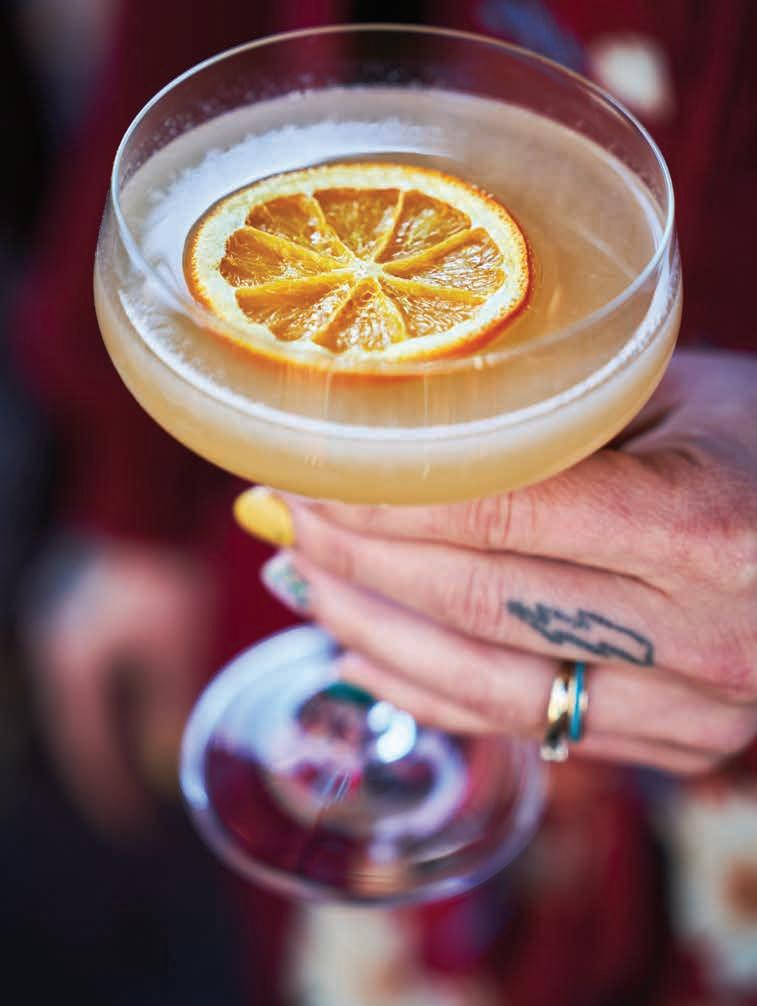
2 oz. Future Gin
¾ oz. fresh lime juice
½ oz. Lemon and Orange Syrup
3 dashes orange bitters
2 dashes Angostura bitters
Add all ingredients to a shaker with ice and shake until incorporated. Strain into a coupe glass and garnish with a dehydrated orange wheel.
Lemon and Orange Syrup
MAKES ABOUT 1 CUP
3 lemons
3 medium oranges
1 cup sugar
Use a peeler to remove citrus peels, being careful not to get any pith. Cut pieces into 2 inch pieces. Juice the citrus and set aside 1 cup. Place peels and sugar in a small pot. Using a muddler or wooden spoon, muddle peels and sugar, then
stir every 10 minutes to release more oils from the citrus peels. Repeat until the mixture looks and feels like wet sand. This will take at least an hour. Add the 1 cup of the citrus juice to sugar and peels. Set the pot over medium heat to melt the sugar, stirring occasionally, but do not allow to boil. Strain liquid into a nonreactive bowl or heatproof glass container and cool liquid. Leftover syrup can be refrigerated for about 30 days.
2021 Embroidery
Pinot Noir
Monterey County
A richer, spicier style of Pinot Noir to hold up to beef and lamb. Its ripe plum and cola flavors are mirrored by the tamarind, soy, and cumin found in the skewers.


2021 Verraco Syrah
Valle de San Vicente
Earth, smoke, and spice abound in this Syrah with flavors of crushed rocks, tamari, and black pepper. Perfect for the plethora of flavors in the skewers and the char from the grill.





Our family owned company has been making quality knives and tools in France since 1890. It started with the Opinel No.08 folding knife 133 years ago, and now encompasses a full range that will take you from the garden to the table.



| @OpinelUSA





FORGET CHARCUTERIE, CHEESE, AND BUTTER BOARDS—THE TINNED FISH BOARD IS THE TASTIEST, TRENDIEST WAY TO ENTERTAIN.



inned fish is being popped open everywhere these days, from the chef’s counter at fine dining restaurants to #tin-fluencers on TikTok’s FYP. While it might seem like a new thing in the U.S., happy-hour gatherings in Spain have long included delicious tinned fish, which was originally a wartime food created to sustain the French military in the 1700s. In my travels to Spain, Portugal, and the Azores over the years, I’ve collected brightly colored latas de conservas to share with friends stateside, initiating them into a portable delicacy that’s often at first shrugged off by skeptics.
In my experience, the best way to be introduced to the wide world of conservas (as they are referred to the Mediterranean) is by building what I like to call a seacuterie board—a beautiful, bountiful spread loaded with all the fixins that makes for the perfect Instagrammable holiday moment. The seacuterie board is truly the quickest, easiest, and most delicious way to entertain. And the best part is you don’t have to have a lick of culinary prowess to do it.
“The tinned fish trend has really been brewing for a while. People are finally understanding that it’s actually a high-quality product that’s tinned at its peak of freshness,” says David Rosoff, co-owner of Bar Moruno and Rapido, a Los Angeles bodega that features an unparalleled selection of conservas.


“The fun thing about tinned fish is that it has this interesting collectible pursuit to it, almost like trading cards,” says Rosoff. Indeed, the modern options on the market offer a tapestry of art and design that are conversation starters in their own right, welcoming you into a world of flavor that’s a far cry from Chicken of the Sea.
While the American perception of tinned fish often is associated with cheaply canned tuna in water, the rest of the world—especially in Portugal
and Spain, where some of the best conservas hail from—sees tinned fish as a delicacy worth celebrating. Take, for instance, Jose Gourmet’s cod in olive oil and garlic. If this perfectly prepared, delicate, buttery white fish showed up on your plate at a Michelin-starred restaurant, you’d be convinced it was poached by a pro.
“Nowadays you can get squids in their own ink, or mussels in tomato or piri-piri sauce. It’s almost the freshest way to eat seafood. The shellfish come out of the shell and go straight into the can,” says Chris Feldmeier, chef and partner at Bar Moruno and Rapido. “It’s a self-contained, perfect meal that you can bring anywhere. What else can you take on a hike or travel with and have a perfect, fresh meal like that?”
The seacuterie spread ratchets the gourmet element up even further, loading a bountiful board with all the accoutrements so that guests can experiment and build the perfect bite for their palate. The basic principles of combining salt, fat, acid, heat, and freshness are all a part of the process, and make for an excellent conversation starter. (My favorite combo? A smoked mussel topped with one of Trader Joe’s hot-sweet jalapeños on a plantain chip, a flavor combo not too dissimilar from sweet pickles on smoky Texas BBQ.)
“If you’ve been eating tuna your whole life and then you taste really good tuna in quality olive oil, that’s a profound experience for an adult to have. It’s like, ‘Man, I’ve been on this planet for 40 years and I’ve never experienced this.’ It’s a real epiphany for people,” says Rossoff.
Our team at Sunset had a blast experimenting with combining items on our board. Sardines and dill chimichurri? Sure! Sardines with caper berries? Why yes! The best part is, with the right crackers, the spread can be both dairyand gluten-free, making it approachable for the whole party. And the luxuriously oily omega-3s go particularly well with a glass of bubbly or rosé.
In that spirit, here are some tips on building the ultimate seacuterie board this summer.
1. TASTE THE RAINBOW
For a great seacuterie board, we suggest trying out a variety of tins. One smoked option, one kind of shellfish, and one containing little fishes like sardines or mackerel is a good way to start. “Sardines and/or anchovies are a great gateway,” says Feldmeier. “Mackerel is also incredibly approachable, less fishy, and more versatile.” It’s also nice to think of things in terms of high-low. While we love options like Patagonia Provisions and Jose Gourmet, they add up. Splurge on one fancy tin, then fill in your board with options like Trader Joe’s amazing smoked mussels, a steal at $2.99 a tin.

2. PLAY WITH PICKLES
You’ll want to add at least one or two pickled options for an acidic, vinegar-y crunch that cuts through the fattiness of the fish. Feldmeier suggests pickled radishes or sweet serrano pickles, and we love Trader Joe’s hot sweet jalapeños, a wonderfully affordable option, too. Quick pickled red onions and preserved lemons are also great DIY options that’ll add color and flavor to the spread.
We recommend adding something fun and punchy to the board, like an ultra-dilly chimichurri. If you’d prefer to just chop up some herbs, dill, chives, and parsley are nice to add to the mix.
Add some chili crisp from XCJ to the
top of your perfect bite, or even some spicy zhoug, which packs a double whammy of herbaceous heat.
Be sure to offer a variety of crackers and freshly baked bread for guests to experiment with. Some of our faves are Bub & Grandma’s fermented sourdough, Trader Joe’s plantain chips, sliced cucumbers for crunch, and some plain La Panzanella minis. This not only adds color and variety, but a textural base to play with.


Not all tinned fish brands are created equal. “With things like mackerel, sardines, and squid, those are the things that you want fished more often because they reproduce more often, and they don’t get as overfished,” says Feldmeier. “Tinned fish also doesn’t require refrigeration, so therefore there’s less energy, and it’s close to zero waste. There’s not a lot of by-product when you’re eating sardines, mackerel, and anchovies because you eat the bones, skin and all.” Check for labels like MSC and EcoCert for cues, too.

While it’s true that many heritage brands are based in Portugal, still considered the gold standard when it comes to conservas, there are some brands in the West to keep an eye out for. “A lot of the better tinned fish domestically is coming from Alaska,” says Feldmeier. “We love Scout in Canada, Ekone Oyster Company, Wild Planet, and Patagonia Provisions.”
THE PISCINE PRINCIPLES OF THE EMINENTLY IMPROVISABLE TINNED FISH BOARD.CHILI OIL: It’s always nice to have some kick in the mix, so be sure to add a bowl of your favorite (we love XCJ’s chili crisp) into the mix.
SWEET HOT JALAPEÑOS: This TJ’s jar has become a staple in our fridge; the sweet heat is giving butter pickle meets jalapeño.
SMOKED FISH DIP: A perfect entrylevel spread, this recipe is an easy-tomake, affordable crowd pleaser.

DILL CHIMICHURRI: Stacking this classic dip with fresh dill livens up the richness of tinned fish.
GILDAS: A popular pintxo in Basque Country, this salty, spicy finger food is made by stacking peppers, anchovies, and olives on a stick.
We selected the ideal bottles to serve with this menu, and it’s available to members of our wine club. Sign up for quarterly deliveries of the best wines in the West at sunset.com/wineclub.
PICKLED RED ONION: Simple to whip up, we make ours loaded with whole black peppercorns and star anise for aromatics.
2022 Martin Ray Rosé of Pinot Noir Russian River Valley
Few wines are as versatile as rosé, and Pinot Noir is a grape with an affinity for salmon and other meatier fish.


2021 South Coast Winery Sauvignon Blanc Musque Clone

Temecula Valley
FRESH LEMON: Acid is a cure-all. Don’t forget to add some wedges, not just for a spritz but for color.
Like a squeeze of lemon as the finishing touch on a seafood dish, this wine adds a refreshing counterpoint to the salt and oil of the fish board.
2021 Private Property Grenache
Santa Lucia Highlands
This fruity and fresh Grenache will perfectly contrast the rich, smoky fish, and the dill of the relish matches with the herbal tones of the wine. Grenache is one of the most popular grapes of Spain, where it can commonly be found served chilled alongside an array of seafood tapas such as preserved seafood.

The ideal foray for the fish-phobic, this smoked fish dip gives lox and bagel vibes, and is super simple to whip up. Serve with rye bread or crackers. It will keep for 5 days in the fridge.

SERVES 4
1 tin smoked mackerel, drained
1 tin smoked salmon, drained
¼ cup organic whipped cream cheese
¼ cup organic sour cream
1 whole lemon, juiced
1 Tbsp. chopped chives
1 Tbsp. chopped dill
½ Tbsp. Crystal hot sauce
Cracked black pepper to taste
In a medium mixing bowl, flake the mackerel and salmon with a fork. Add remaining ingredients and stir. Refrigerate for an hour to set.
While plucking oysters from a tin with a set of chopsticks is certainly an effective means of doing things, there’s actually a utensil that’s historically been used when serving these delicacies of the sea—the sardine fork. Invented in the Victorian era, this flat fork has notably shorter tines than traditional meat or salad forks so as to support the whole fish, preventing it from falling apart on the way to your plate. It can be hard to come across sardine forks in the wild, but Etsy does have some vintage options available, and you can always keep your eyes peeled for them at your favorite flea market.

While traditional chimichurri is heavy on the parsley, we flipped this one on its tail using loads of fish-friendly fresh dill. Spread on crackers or toasts with your tinned fish, and save the leftover to topped grilled meats. The chimichurri will last one week refrigerated in a Mason jar.
MAKES 2 CUPS
1 shallot, finely chopped
1 Tbsp. Maldon salt
½ cup fresh dill
½ cup parsley
1 clove garlic
1 Tbsp. crushed red chili flake
Zest of 1 lemon
½ cup red wine vinegar

½ cup olive oil
Place chopped shallot in a bowl, and toss with sea salt. Set aside. Finely chop fresh dill, parsely, and garlic. Add to the bowl along with the remaining ingredients, whisking to combine. Refrigerate for 30 minutes before serving.

The Sunset Subscription Box delivers the Best of the West straight to your door!

Every three months, you’ll get a box full of home, design, food, and gardening products curated by Sunset editors to help you make the most of every season.
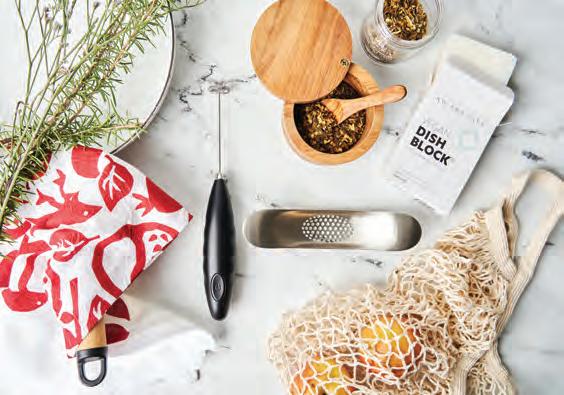
You can choose the box that fits your style and price point, then get ready to be surprised and delighted by what you find inside!
Our next box is full of products for an epic summer: think grilling, camping, and al fresco entertaining.
Past boxes have included goodies like an acacia salt cellar, block printed hand towels, French market bags and more.

Our guide to the perfect weekend in California’s most unexpected capital of meat-free cuisine.
Story by KRISTA SIMMONS Photographs by THOMAS J. STORYIt’s time you reframe what you think you know about vegan food. And there’s no better place to do that than in Oakland. While it may come as a surprise to some that the most groundbreaking meat-free cuisine isn’t coming out of historically hippie communities like Berkeley or Santa Cruz, this multicultural melting pot makes for some of the most exciting plant-based cuisine, from soul food to Singaporean and everything in between. Grab a bike from Bay Wheels and pack your appetite for a delicious 48 hours in the Bright Side of the Bay.
BREAKFAST: Start your day with pour-overs and plantbased pastries at Timeless Coffee, a roastery and bakery that’s been serving the vegan community since 2012. While the offerings in Oakland have greatly expanded, thanks to the path they and other folks like Millennium have paved, these delicious doughnuts, cakes, and baked goods still stand the test of time.

LUNCH : Keep things fresh at Roasted and Raw, where fitness-obsessed chef Imani Greer makes balanced, healthful burgers and bowls that taste great whether you’re a lifelong vegan, experimenting with flexitarianism, or just integrating more veg into your diet. While many vegan spots focus on fried comfort foods that are treats even without the meat, here you’ll find delicious black-bean burgers and empanadas that leave you feeling sated and energized for the afternoon ahead.


DINNER : Gather the squad and head to Emporium Arcade Bar. Inside, the good vibes are rivaled only by La Veganza’s headscratchingly delicious renditions of carne asada and carnitas—both soy-based—leave you wondering why anyone even bothers eating meat anymore when plant-based can taste so good.



NIGHTCAP: Rest your head at Kissel Oakland. The hotel’s High 5ive Bar has a rooftop with excellent views, carefully crafted cocktails, and a vegan tart whose fruit fillings shift with the seasons. The rooms are thoughtfully designed and ultra-cozy, and the lobby restaurant, Otto’s, also has great brekkie options, like overnight oats made with coconut and almond milk, as well as a County Line Harvest breakfast bowl loaded with all sorts of locally farmed produce.

BRUNCH : Owned by Tamearra Dyson, Souley Vegan is a staple in the Oakland vegan community, and for good reason. Creole classics like crispy “ain’t gator” po’ boys and rich, flavorful jazzin’ jambalaya are miraculously made without the use of pork, yet still maintain all that soul-hugging goodness. Don’t forget to pick up a mini sweet potato pie for the flight home; you’ll be the envy of your seatmates as you enjoy it with a cup of coffee.



DINNER : You’ll want to reserve a table in the outdoor parklet at Lion Dance Cafe, which breathes new life into family Teochew recipes and classic Singaporean hawker favorites. Flavorpacked Southeast Asian dishes make use of house ferments and many dishes, including the outstanding laksa, are made both gluten- and nut-free as well. If the spicy, umami-rich fried oyster mushroom goreng is on the menu, it’s not to be missed.



It’s a great time to be an outdoors enthusiast. Gone are the days where you had to be a member of the 10th Mountain Division to be able to experience the vast beauty of the West. Now, newly opened natureadjacent offerings are making it easier for everyone from soft adventurers to backcountry warriors to explore – all without having to schlep a single piece of gear.
From campgrounds that provide gear rentals to blow-your-mind high-design hotels outfitted with adventure concierges and everything in between, here’s how to indulge in the great outdoors, sans stress.

THERE’S NO ONE WAY TO ADVENTURE, AND THE NEWEST ACCOMMODATIONS ARE TAKING NOTICE, PROVIDING POINTS OF ENTRY FOR EVERY TYPE OF TRAVELER.

THE LINE BETWEEN HOTELS AND GLAMPING IS BLURRING WITH RESORTS UPPING THEIR GAME AND HOTELS OFFERING AMENITIES IN, AND EASY ACCESS TO, THE GREAT OUTDOORS.
This spring, Denver-based Under Canvas launched a new brand called ULUM—its most extravagant offering yet. The safari-style hotel located steps from Utah’s Looking Glass Arch boasts rain showers and private plunge pools, all situated on 200 acres
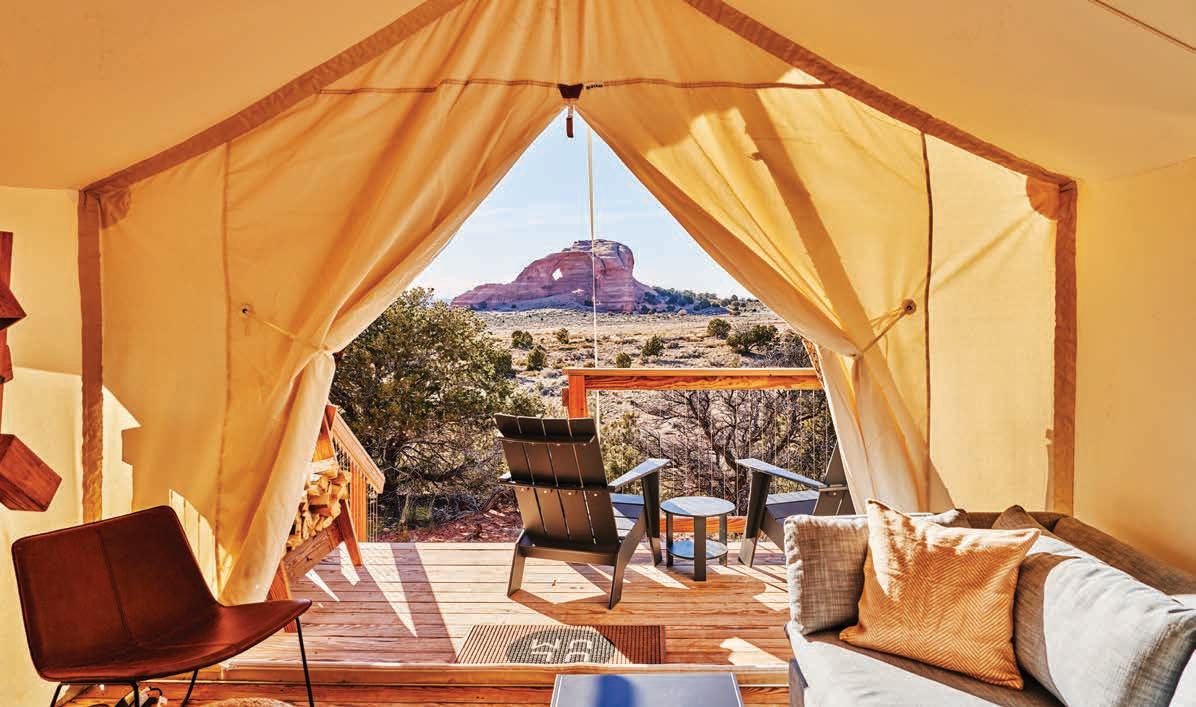
of ochre desert landscape. Its contemporary lobby viewing lounge offers expansive floor-to-ceiling glass windows that open up to views of Canyonlands National Park, and Adventure Concierges connect guests with local outfitters. Locally inspired dining,
firepits, and a yoga deck mean you can immerse yourself in nature without having to step off property. Plus, the resort utilized International Dark Sky standards in the development process to mitigate light pollution and preserve Moab’s stunning starscapes.
The latest offering from the founder of Autocamp is a onestop shop, including all the bells and whistles like Black Diamond equipment rentals, onsite guides, and educational programming. Great social areas are at the forefront, with a communal biergarten and café open to both guests and the local community. There’s a pool on the Moab property too, perfect for a post-adventure plunge in the desert. And a selection of rooms feature Black Diamond portaledges, giving guests the experience of what it feels like to sleep in the hanging beds used by rock climbers on cliff faces. There are storage options in-room, designed specifically for gear.
Camping gear can be cost-prohibitive and intimidating. That’s why we love the idea behind this Crested Butte, Colorado–based campground, where you can rent everything from Yeti coolers to flat-top grills and North Face tents. Situated along the iconic Taylor River, known for fly fishing and pristine natural beauty, the site comes with all the creature comforts: toilets, free firewood, and potable water, plus a concierge to help you plan your adventures. Consider it camping, just easier.

Pacific Northwest–based Loge is set to open spots in South Fork, Colorado; Glacier National Park, Montana; Missoula, Montana; St. George, Utah; Taos, New Mexico; and Crystal Mountain, Washington, by the end of this year. Their dog-friendly motels are inspired by the laidback spirit of the ‘70s, offering both rooms and campsites. At Mount Shasta, you can rent mountain bikes suitable for the whole family, and in Westport, Washington, you can get anything you’d need for a perfect day on the coast, including clam guns, stand-up paddleboards, and kayaks.



New to the scene is Trailborn, launching this summer with design-forward boutique properties in close proximity to national parks and monuments. Their flagship outpost in Estes Park, Colorado, has access to snowcapped peaks, alpine lakes, and 300 miles of hiking trails. There’ll be locations in Mendocino, California, and the Grand Canyon to follow.

Located steps from Utah’s Looking Glass Arch, ULUM boasts safari-style tents with rain showers and private plunge pools, all situated on 200 acres of ochre desert landscape.

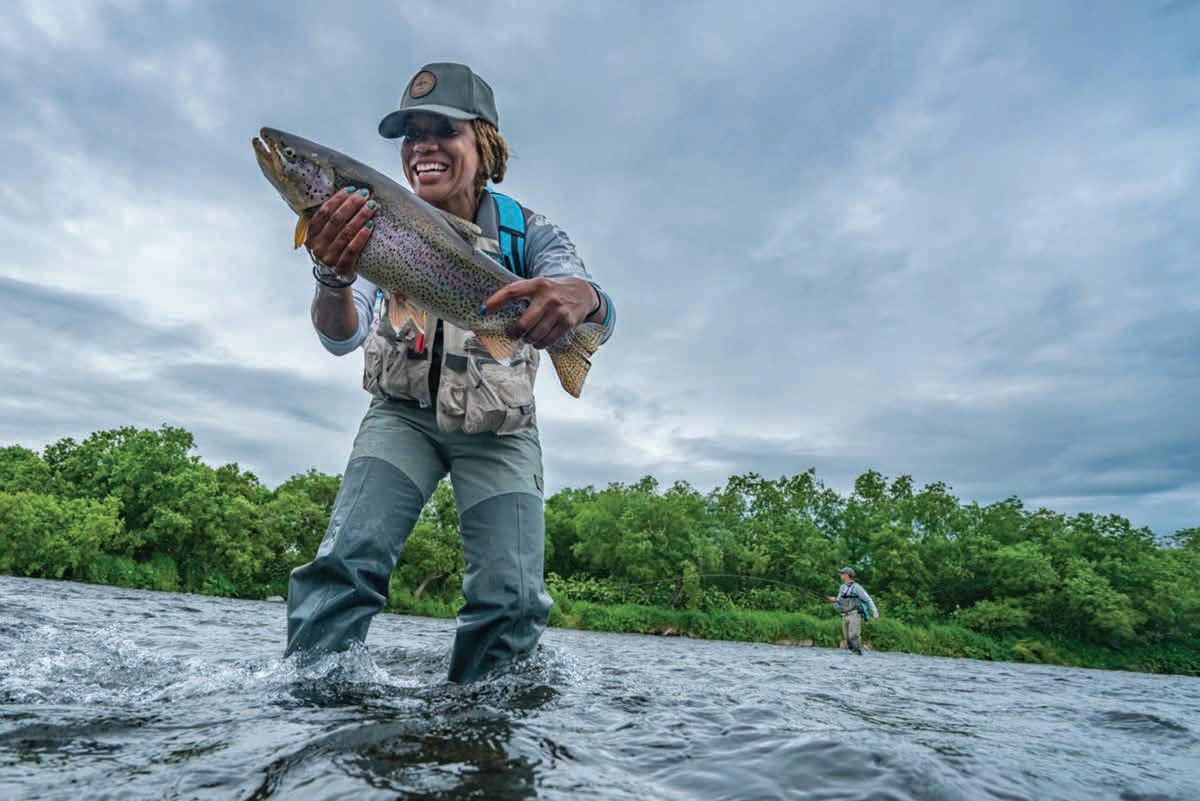
It’s been nothing short of inspirational to follow the journey of Rue Mapp, the founder of Outdoor Afro, a national not-for-profit organization whose mission is to celebrate and inspire Black connections and leadership in nature. We first featured Mapp in our 2014 camping issue, and though she’s exponentially expanded and evolved her work, the mission is still the same: creating Black joy and healing through being strong, beautiful, and free in nature. Outdoor Afro now has over 60,000 participants, and has trained over 100 volunteer leaders worldwide.
In Mapp’s new book, Nature Swagger: Stories and Visions of Black Joy in the Outdoors, she celebrates the fact that Black communities have always had a relationship with land, water, and wildlife. We checked in with her to hear firsthand how California inspired her career and learn about some of her favorite places to find solace in nature.
For those who might not be familiar, tell us a little about how Outdoor Afro started. It all started with a lifetime connection to the outdoors through my parents, who migrated from the South and had a family ranch up in Lake County, California that we visited weekly throughout my childhood. It was a place that nurtured not only my ability to explore nature, but to learn about hunting, farming, fishing, and land stewardship.
What was important about that experience is that we shared it often with others; I had this front-row immersion in what it meant to welcome people in nature. My dad’s hospitality is still one that’s remarked on to this day. So I’ve been able to take that experience that I had and build on that. I want to help more Black people find their way to reconnect with the outdoors because I know what those experiences gave me.
Starting out, I knew that there was this big deficit of stories that were being told. I had grown up with something that was very joyful and loving and connected to a long history with Black connection to nature.
What started as a blog eventually became a national not-for-profit organization, and we’re able to take that hospitality that I learned and disseminate that through volunteer leaders who we train, welcoming people and centering hospitality. For me it’s the fullcircle moment to be able to do what my father taught me and to share that feeling all over the country.
I imagine growing up in California and the West might have impacted the work you do now. Can you talk a bit about that?
My pride in being a Californian deepens every year. It has such a very distinct history— its people and geology are so different from the rest of the United States. I feel like in California the imprint of nature is inescapable. I have this tactile awareness of being in a bayside community, which is different than being in the desert or in the rolling woodlands further north. We are growing on moving ground. These tectonic plates underneath our feet create this incredible forest that starts at our coast with the redwoods and works its way to the alpine Sierra.
Together, it’s a physical representation of change. And people come here to change, too. They came here to strike it rich in the Gold Rush, or make it in Hollywood, or leave the things they feel are unchangeable behind. And that is what underpins a lot of the Black migration out of places like Texas and Louisiana, where my parents came from. They left to escape the Jim Crow level of racism, and have a wider range of economic opportunity that just was completely stagnant and not possible where they came from.
What’s so special, specifically, about Oakland, where your Outdoor Afro is based?
I always reflect on redwoods. At one point the Oakland hills were covered in giant redwoods, and those redwoods were all clearcut in service of the great demand for housing after the Gold Rush began. If you look at some of the old pictures of what was happening as the result of the relentless milling located in that area, it was a clear-cut hillside.
Because of conservation, and the ways that people chose to develop around that area, a lot of that landscape has come back. And they’re tall and strong. For me to visit those redwoods in Joaquin Miller Park or at Reinhardt Redwood Regional, you can still have this incredible experience of regeneration. It’s a meditation on how—especially in more recent times, with lots of people feeling displaced when things are clear cut from your life—there can be hope.
Why do you feel the continued work you’re doing is essential for the community, especially in this particular time in space?
I grew up in the height of the Black Power movement. Justice and thinking about equity has not been a trend, or even about a single moment. It’s been an awareness and a lens that I’ve viewed the world through my entire life.

RUE MAPP SHARES HER FAVORITE WAYS TO GET OUTDOORS.

KIRBY COVE CAMPGROUND
Located in Marin Headlands, the campground sits in the Sausalito area and is just north of the Golden Gate Bridge. As part of the Golden Gate National Recreation Area, this site offers breathtaking panoramic views of the Bay Area and includes five beautifully appointed overnight campsites. Hiking trails lead to sightseeing opportunities at stops like the Point Bonita Lighthouse and Battery Kirby, a historic army battery.
For a riverfront destination and swimming hole during the summer months, this Lagunitas park is the ideal setting. Part of California State Parks, Samuel P. Taylor’s campsite is mostly nestled under towering redwoods and features various hikes for easy strolls. Its South Creek trail is wheelchair-accessible, while heading toward the Barnabe Peak affords more challenging terrain and rare views of Marin County.
With the East Bay Regional Park District, the Livermore location provides that classic car-camping experience with instant access to lake life. This deep valley park is covered with oak trees and has ample room for fishing, paddling, swimming, and boating. A huge family reunion appeal is its large group campsite for multigenerational fun in nature.
Del Valle Regional Park is one of Rue Mapp’s picks in the East Bay.
Perhaps I have an anxious attachment style when it comes to espresso, but I’m a firm believer that good coffee is as much a packing essential as a decent toothbrush. And these days, there’s no need to settle on quality when it comes to your morning joe—regardless of whether you’re backcountry camping or overnighting at a hotel—because top-tier specialty coffee brands have recently launched instant versions of their roasts. For those of you who’ve been scarred by memories of Nescafé, fear not; this is far from the bitter blends you may have tried before. And bonus: All you need for a café-level cup is hot water. Just open up the sachet filled with freeze-dried granules of
This mountain-friendly brand offers Colombian arabica beans pre-blended with powdered coconut creamer, meaning you can get a plant-based instant latte at altitude. There’s also a delicious dirty chai option, perfect for cozying up during the upcoming winter months. And for those who prefer matcha, you’ll really dig the matcha with benefits, which includes MCTs and lion’s mane mushrooms.

Female-owned coffee roaster Equator selected coffees from small garden farms in the Lake Toba region of Sumatra and blended them together. The coffee was processed using the island’s traditional wethull method, creating a citrusy, woodsy blend that has notes of lemongrass, cocoa nibs, and sandalwood. The product comes in packets of five and costs $14.95. There’s also a decaf option.
instant coffee, pour it into a mug along with hot H₂O, mix, and sip your way to bliss. A major selling point for these instant coffees is not just that they’re truly on par with pour-over but that they come in recyclable or compostable lightweight packaging, making them easy to bring along on your next alpine adventure or the next Burning Man festival, if that’s your style. “Coffee lovers should be able to have a great cup of coffee even when they don’t have access to a temperature-specific kettle, burr grinder, and scale,” says Freudiger. “Gatekeeping great coffee doesn’t do anyone along the supply line any good.” I couldn’t agree more. Here are some of my favorites to pack on a trip:
Though Intelli is Chicagobased, the roaster made waves on the West Coast with its Silver Lake outpost in Los Angeles, and has since become a staple in the scene. The signature Black Cat roast is now available in instant form, offering a freeze-dried espresso blend with notes of dark chocolate, raw sugar, and marshmallow.
Santa Cruz roaster Verve offers several instant options, but my favorite is the variety pack, which includes seven single-serving sachets, each with distinct flavors, including a decaf option. The product tastes great, and a bonus is the real value that Verve brings to everyone throughout the production process, from the farmers to the distributors to the packers.
When looking at the big picture, the ease with which we jetset from A to B in our globalized, hyperconnected world is nothing short of a miracle. Aïcha Nyström and Laurent Roffé, the husband-and-wife team beyond the travel company Tapooz, are hoping to make that simplicity a reality for all travelers, providing bespoke planning services for those with accessibility needs.
The couple started the Bay Area–based company eleven years ago, with both having been involved in the community with disabilities; Roffé was a guide and trainer for those with disabilities, and Nyström a ski guide for those with visual impairment.
They now service over 30 destinations, and have brought thousands of guests from all over the world to vetted destinations and experiences customized around the needs of each client.
“We want to see a point where anybody can get on their tablet and book as fully able-bodied people,” says Roffé. “All the tools are there, it’s just a matter of time.”
Here are Roffé’s three tips when it comes to planning accessible travel.
BOOK WITH AN EXPERT.
“People in a wheelchair represent such a small portion of people with accessibility needs,” says Roffé. There’s a much broader scope of what it takes to create a navigable path of travel. Tapooz doesn’t earn commissions on bookings with its partners like travel agents would, and the couple’s years of experience means they have deep relationships with partners that help make the trip seamless.
DON’T SKIP THE PARKS.
“The National Parks System has done a really great job of upgrading and updating; the Grand Canyon is a great example of how trails have opened up for people with a wheelchair.” He also cites the Muir Woods and Alcatraz as 100% accessible; they’ll pick you up from the ferry landing. “Don’t overlook state parks, “ he says. “Some of them are on par with providing this experience, too.”

ALWAYS CALL AHEAD.
When it comes to room access, Roffé says that it boils down to updates, availability, and inventory. “If you’re trying to book on your own, it’s an intricate process. Many hotels don’t have filters that allow you to plug in your requirements. It’s always best to call, verify the path of travel, and then call again to double confirm your requirements. Especially the day before, double check.”
Tapooz offerrs trip-planning services that streamline access to some of the West’s most iconic monuments, like the Grand Canyon.THIS SUMMER’S NEW ADVENTUREFRIENDLY FASHION CAN TAKE YOU FROM BASE CAMP TO THE GROCERY STORE AND EVERYWHERE IN BETWEEN.

This SoCal milliner makes on-trend affordable styles year-round. This season’s new Frankie paper straw hat features a genuine leather tie band and stampede strap, making it perfect for a windy day at the beach or a sunny hike. $84, wyethusa.com


Technical adventure shorts can be less than flattering. But the new Halle E-Waist Short II takes you from the beach to base camp looking fresh. Made with ReZion, an Earth-friendly and versatile performance fabric, this movable short is built to hang. $75, prana.com

It’s hard to find a suit with both form and function, but the Weekender fits the bill. The low-plunge neckline has supportive crossback straps that allow you to move freely but still look ready for the ‘gram. $170, leftonfriday.com
This Portland-based eyewear brand proves that wooden sunglasses can actually be chic. Plus, they’re polarized, meaning you can explore while keeping your eyes properly protected. $199, schwood. com

The new Abisko Hike Foldsack, made from 100% recycled nylon, is ideal for day hikes and traveling. The eye-catching terra cotta color has a street-friendly style: There’s an inner elastic pouch that perfectly fits a MacBook Pro. $135, fjallraven.com

Teva
Tevas have come a long way since being created in 1984 by a river guide. This season’s fashion-forward, festival-ready Midform Universal Leather has a just-right 1¼-inch height, giving a very functional, earth-toned approach to the platform trend. $85, teva.com

This month: San Gabriel Valley, CA
The insider: Chris Yang, chef-owner of Yang's Kitchen


Yang’s Kitchen, located in the heart of Alhambra, has been an evolving staple in the SGV food scene, but one thing has always remained certain: Chef-owner Chris Yang and his team have always turned out playful, modern, and totally crave-worthy cooking that nods to the area’s vibrant Chinese American community, which is one of the largest in the West.
There’s no shortage of great food in the San Gabriel Valley, where food crawls are a great way to get a taste of it all. “Golden Leaf is an authentic and homey mom-andpop Taiwanese restaurant,” known for its beef noodle soup and minced pork belly bowl. Dolan’s has “tasty Uighur food, including delicious handpulled noodles.”
For excellent coffee, stop by Mandarin Coffee Stand, “a new coffee shop in a super-cute retro-style arcade in Pasadena” before heading to the
Huntington Library, which is always “a great daytime activity tucked in the heart of San Marino” surrounded by “beautiful gardens and interesting artwork.”
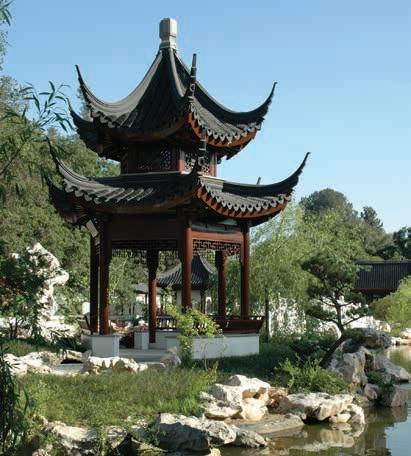
Head to Meats & Essentials, “a new butcher shop in San Marino dedicated
Yang's Kitchen
to sustainably and ethically raised meats. They also serve tasty coffee and sandwiches throughout the day.” Another must-visit is Good Luck Wine Shop, “a winery and wine shop tucked away in East Pasadena. They have lots of interesting selections, including natural wine.”

 Golden Leaf
Good Luck Wine Shop
Huntington Library
Golden Leaf
Good Luck Wine Shop
Huntington Library

one of the best friedchicken sandwiches in the area.”

“Swing by Folklore Coffee for a honey-cinnamon latte.” Later in the day, “if you love beer, Bonsai Brewing Project is a local watering hole ideal for enjoying craft beer on their dog-friendly lawn while indulging in a tarot card reading.” If cocktails are more your speed, Spotted Bear Spirits “has a stylish tasting room adjacent to their downtown Whitefish distillery. If you’ve never tried huckleberries, this is your chance in cocktail form.”
This month: Whitefish, MT
The insider: Erin Hutchison, freelance photographer

Erin Hutchison is a freelance photographer who specializes in shooting spectacularly beautiful outdoor lifestyle and hunting images. When she doesn’t have her lens fixed on wildlife in the backcountry, she works in marketing for one of our favorite footwear brands, Danner. Here she shares some of her tips from her home of Whitefish, an outdoor adventure oasis imbued with Old West charm and located outside the wonders of Glacier National Park.

“Clydesdale Outpost is a boutique guest ranch with six modern cabins for rent. Soak in your private cedar tub or enjoy a peaceful cup of joe while the Clydesdales greet you each morning.” One of the highlights of a stay? “A curated cowboy cookout in the field overlooking the river.” For long-term stays, book in at Startup Chalet. “With floor-toceiling windows throughout, you’re instantly immersed in nature and ready to relax.”
Book a seat at the base of Whitefish Mountain Resort at the Last Chair Kitchen & Bar “for a cozy dining experience with a deliciously eclectic menu.” As for the best spot for a classic carb load before miles of mountain biking, grab a bite at Abruzzo Italian Kitchen , “known for their authentic pasta dishes and pristine wine selection. Come lunchtime, follow the scent of fresh-baked bread to the Wich Haus for gourmet sandwiches. Trust me when I say it’s home to

“Lace up your hiking boots and trek to Avalanche Lake near the west entrance of Glacier National Park .” If you can’t snag a reservation but want to hit the trails, the “ Whitefish Trail network has dozens of miles of excellent hiking and biking paths with varying levels of difficulty. Or venture a little further to Mount Aeneas for a tough but rewarding burner with 360-degree views of the Jewel Basin If you’re lucky, a family of mountain goats will greet you at the summit.”
Located on the very strollable main drag of Central Avenue, Mum’s Flowers “will draw you inside from the aroma of fresh blooms and seasonally decorated windows.” Another great place for shopping is Big Sky Antiques, “a store of wonderfully curated oddities and antiques. From antler mounts to jewelry and vintage signs, there’s a keepsake for everyone.”
The Last Chair Spotted Bear Spirits Avalanche Lake


















Bill Esparza is a food journalist, fixer, and owner of Club Tengo Hambre, a culinary tour company based in Mexico. He’s appeared as a food expert on countless television shows, including Netflix’s Street Food USA . His work covering Latin American cuisine has taken him around the globe, eventually winning him a James Beard Award. Here he shares his tips for one of his favorite, most underrated cities in Mexico.
This month: Tijuana, Mexico
The insider: Bill Esparza, author of L.A. Mexicano




Start your culinary adventure by taking a stroll along Avenida Revolución, also known as La Revu, here you can taste the “original tableside Caesar salad at Caesar’s” and grab “Mexican craft beer flights at local breweries and scope out local art inside Pasaje Rodríguez .” Then, take a detour to Calle Sexta “for a bar crawl. While you’re there, take a peek at the banners outside El Foro Antiguo Palacio Jai Alai to catch a Mexican pop show,” or buy tickets to “a banda show across the street at Las Pulgas.”
Kool Restaurante is a fashionable space” for everything from “Mexican craft beer to stylish cocktails made with a range of Mexican spirits to both natural and classic wines from the Valle de Guadalupe and beyond. Savage feels like a modern Tijuana classic, with creative, refreshing cocktails” and a zonkey-stripe decor that plays on the city’s iconic zebra-painted burro mascot.
For curios from all over Mexico, slip into
Emporium , where you’ll find “talavera, silver from Taxco, jewelry, and a fine selection of guayaberas.”
Inside Mercado Hidalgo, you’ll find “artisanal cheeses from various Mexican states, coffee from Veracruz, traditional sweets, and local kitchen accessories,” all great keepsakes to tote across the border.
Full of charm and oldworld glamour, Hotel Lafayette puts you in the center of the action of La Revu, where revelry invented by American Prohibition remains to this day. Quartz Hotel & Spa offers a wellness spa, gym, and pool, and downstairs The Park Tijuana is a great spot to meet friends for a drink.
Oryx Restaurante is the latest hot spot to enjoy modern Cali-Baja cuisine in Tijuana, based on fresh ceviches, local produce, and roasted meats. To continue the street food theme, Tras Horizonte has an innovative menu of fire-roasted surf-andturf tacos, smoky aguachiles, and a mezcal speakeasy out back.
Reno Rodeo Hotel Lafayette Tras Horizonte El Foro Antiguo Palacio Jai Alai{ OUR PICKS FOR WHAT’S ESSENTIAL IN THE WEST }
Yellowstone & So Much More
Bozeman is nestled deep in the heart of the Gallatin Valley and only 80 miles from Yellowstone National Park. Enjoy 360 degree views, trout-filled rivers, and a vibrant town with great lodging and restaurant options. VisitBozeman.com

Craving a summertime escape along the California coast? Say hello to SCP Mendocino Inn and Farm. With a charming array of accommodations to suit your style, plan a relaxing retreat to reconnect with nature— while celebrating wellness and sustainability. scphotel.com/mendocino/

Experience the adventure of a lifetime at Jackson Hole Mountain Resort. Ride the breathtaking Aerial Tram, hike our amazing trails, cruise through our bike park, climb the Via Ferrata and dine in a spectacular setting. Jacksonhole.com

Experience the ultimate adventure in the heart of Arizona! Tempe is your go-to destination for vibrant culture, events and incredible outdoor activities. With a diverse range of attractions, Tempe is the perfect place to explore and unwind. VisitTempe.com


Each wine we’ve chosen brings the poetry and history of California, Oregon, and Washington into your glass, delivering the best of the West in every box. And each is a moment in time, connected to the land, the growers, and the vintners who brought it to life. Join the Sunset Wine Club to enjoy the best bottles in the West.
Unbox The West!
The Sunset Subscription Box brings the Best of the West straight to your door! Every three months, you’ll get a box full of home, design, food, and gardening products curated by Sunset editors. Choose the box that fits your style and price point, then get ready to be surprised and delighted by what you find inside! TheSunsetBox.com






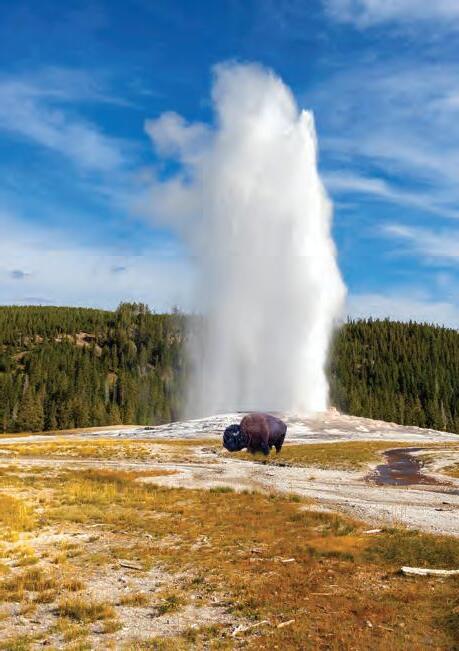


814910


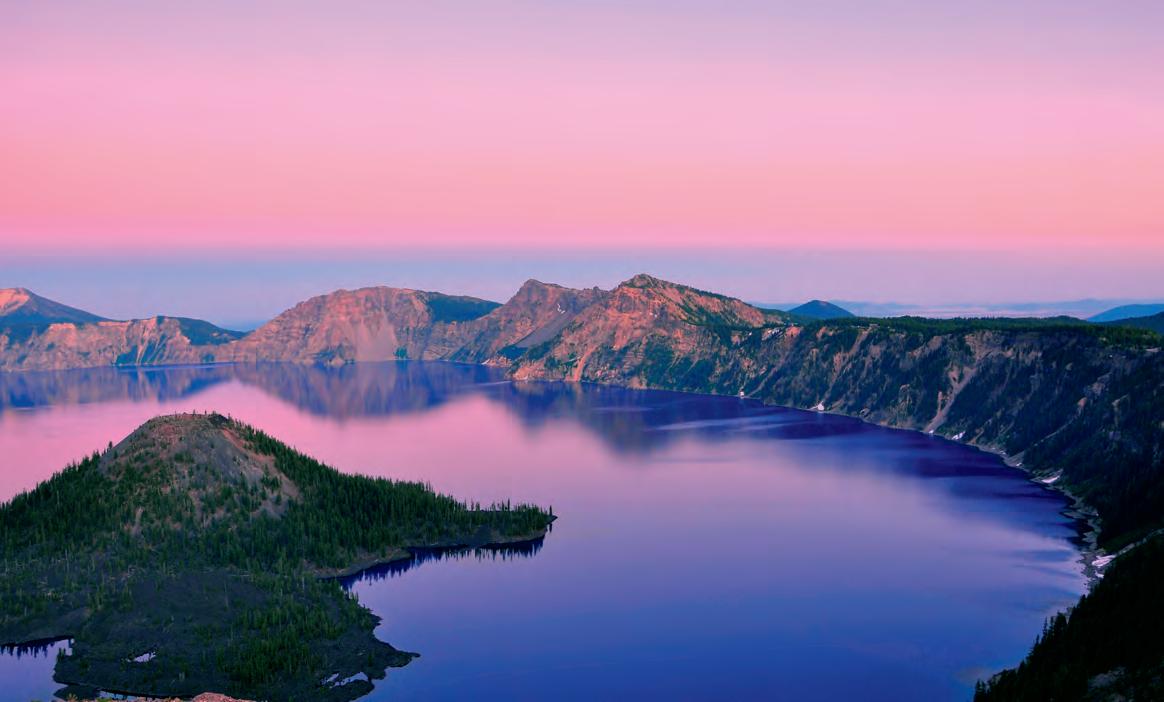



$19.99

Sets of 100 Letterpress Foil-Stamped Guest Hand Towels
















Meet the outdoor wilderness instructor training everyone from the U.S. military to urbanites with a penchant for preparedness.
Interview by KRISTA SIMMONSThomas Coyne is the guy you want on your team when things go sideways. The former wildlands firefighter is now an outdoor wilderness instructor and certifier who’s passionate about cultivating a broader safety culture. We spoke with him about the psychology of disaster training, how survival skills can translate into our daily lives, and the number one skill you need when heading out on the trails.
Why do you feel survival training is imperative for folks, particularly in this day and age?

For me, survival training is all about empowering individuals to serve as their own first responder when help is not available. The modern EMS system in America is based off of a rule called the “golden hour.” This was created by World War I nurses who worked on active battlefields and took incredible notes. We know if we can get you to care within that critical hour, your chances of survival dramatically
increase. If you’re outside, you could be a few hours away from the nearest ambulance station. If anything happens out there, it’s up to you to deal with it way beyond the golden hour.
The most common victim of outdoor emergencies is actually the day user. They don’t have a tent or sleeping bag, so you have to improvise quite a bit. An average Pacific Crest Trail hiker spends hundreds of hours researching
what they’re going to do and how they’re going to pack, so they’re much more prepared and aware. Whereas the day user is there for more casual use, with little to no gear, just out there for the ‘gram.
What’s important for the day user to keep in mind before they head out?
You have to get into the way the brain works, decision making, and the autonomic nervous system. Depending on what you’re doing, you have to give people techniques to calm down. You’re freaking out, but the thing is, you need a plan. You have to have techniques to work in extreme pain and extreme fear, so the mindset really comes in.
What are the most critical techniques you teach your students?
I want to push signaling, because people don’t get rescued because they don’t signal enough. You have to signal right away. Believe it or not, there are over 1,100 volunteer rescue teams alone in the U.S., and that doesn’t count fire rescue. But the most difficult skill is firemaking. Improvised fire, like a friction fire, is super hard, especially when you’re cold and wet. Most YouTube videos don’t show you how to do it right with a knife and a water bottle.
Are there any apps or hacks built into new phones that you’d suggest?
There are a lot of great apps that have GPS that work even when you’re not connected. I do teach land nav, but I have GPS Tracks and Gaia GPS. If you get lost, you can pull these up and plot your way back.
What are three crucial pieces of survival gear one should always have?
A way to make a fire or a fire-making kit, a med kit (people freeze to death because they can’t move), and a way to signal. But ultimately, I want to encourage and give people the tools to get out there. The more people that go out in the wilderness, the more they want to respect it and protect it.
“
I w ant to give people the tools to get out there. The more people that go out in the wilderness, the more they want to respect it and protect it.”



